Intel finally released the new Z590 chipset in 2021, mainly with the 11th generation RocketLake CPUs, PCIe finally upgraded to Gen 4 and increased the number of connections, added support for Thunderbolt 4 and USB4, etc., is considered a good warm-up for the 12th generation Alder Lake. Fortunately, this generation of CPU interface is still LGA1200 and can be backwards compatible with the 10th generation CPU. It seems that under the pressure of AMD, Intel has finally compromised by not forcibly blocking the new chipset from supporting the previous generation of CPUs.
Asus has integrated AI2.0 technology into the Z590 series motherboards, namely AI Noise Cancelation, AI Overclocking, AI Cooling and AI Networking.
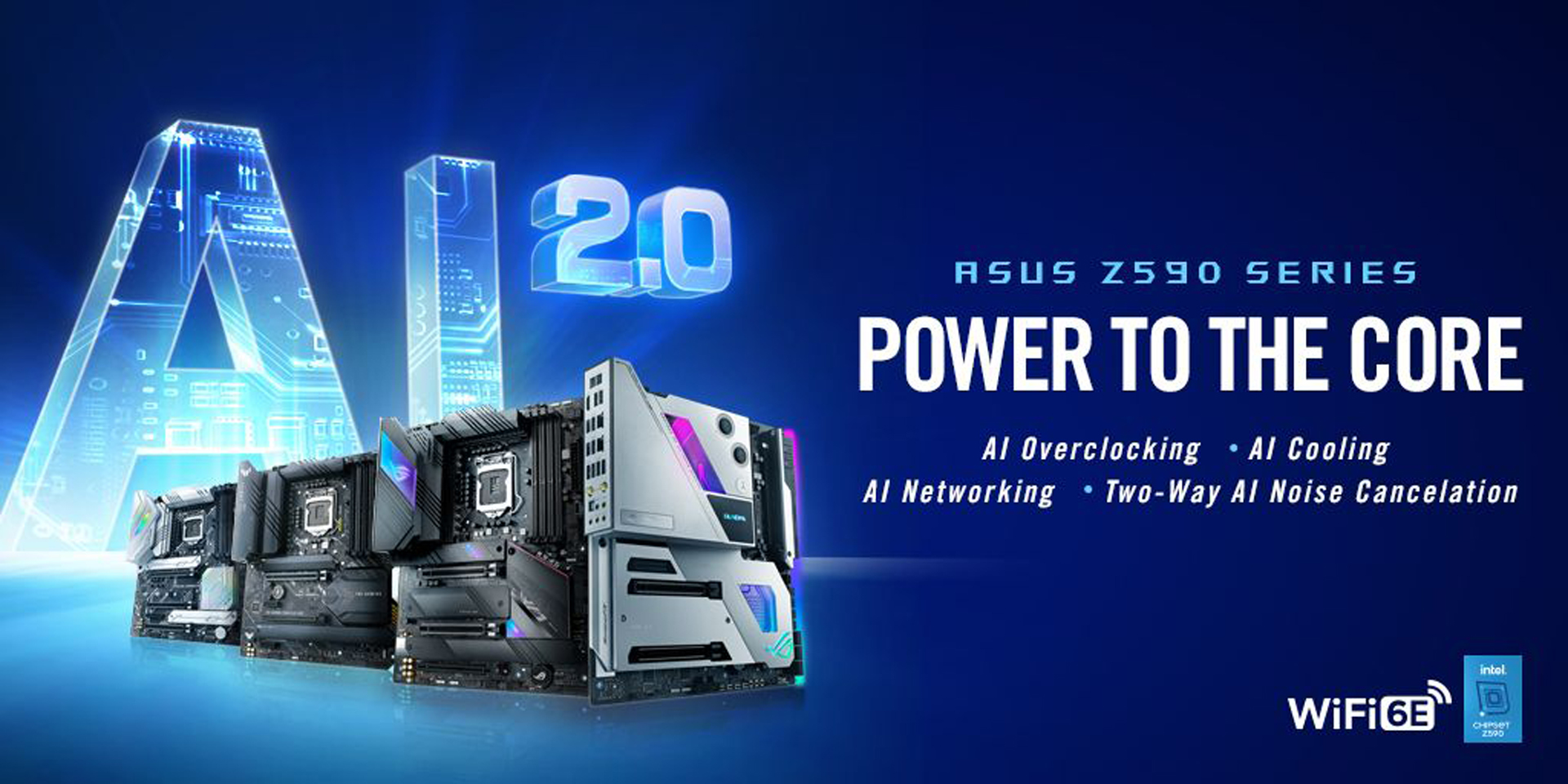
WiFi 6E availability and features are dependent on regulatory limitations and co-existence with 5 GHz WiFi.
AI Overclocking quickly and intelligently assesses the processor’s overclocking potential and system cooling conditions, and accurately predicts the overclocking voltage and frequency for performance tuning recommendations, quickly delivering the overclocking performance that experts would normally spend days manually adjusting to achieve, and easily getting higher performance. There are two ways to enable AI Overclocking: First is to use the ASUS AI Suite 3 in Windows. The second is to enable it from within the motherboard BIOS.

AI Cooling automatically controls the connected motherboard fans, adjusting the fan settings in real-time according to the system load and temperature to ensure that they are in the ideal state and effectively reduce fan noise.

AI Networking is designed to help gamers achieve a smooth, lag-free gaming experience. GameFirst VI Low Latency Technology uses AI-enhanced recognition and speed-boosting technology to ensure faster and smarter network optimisation.
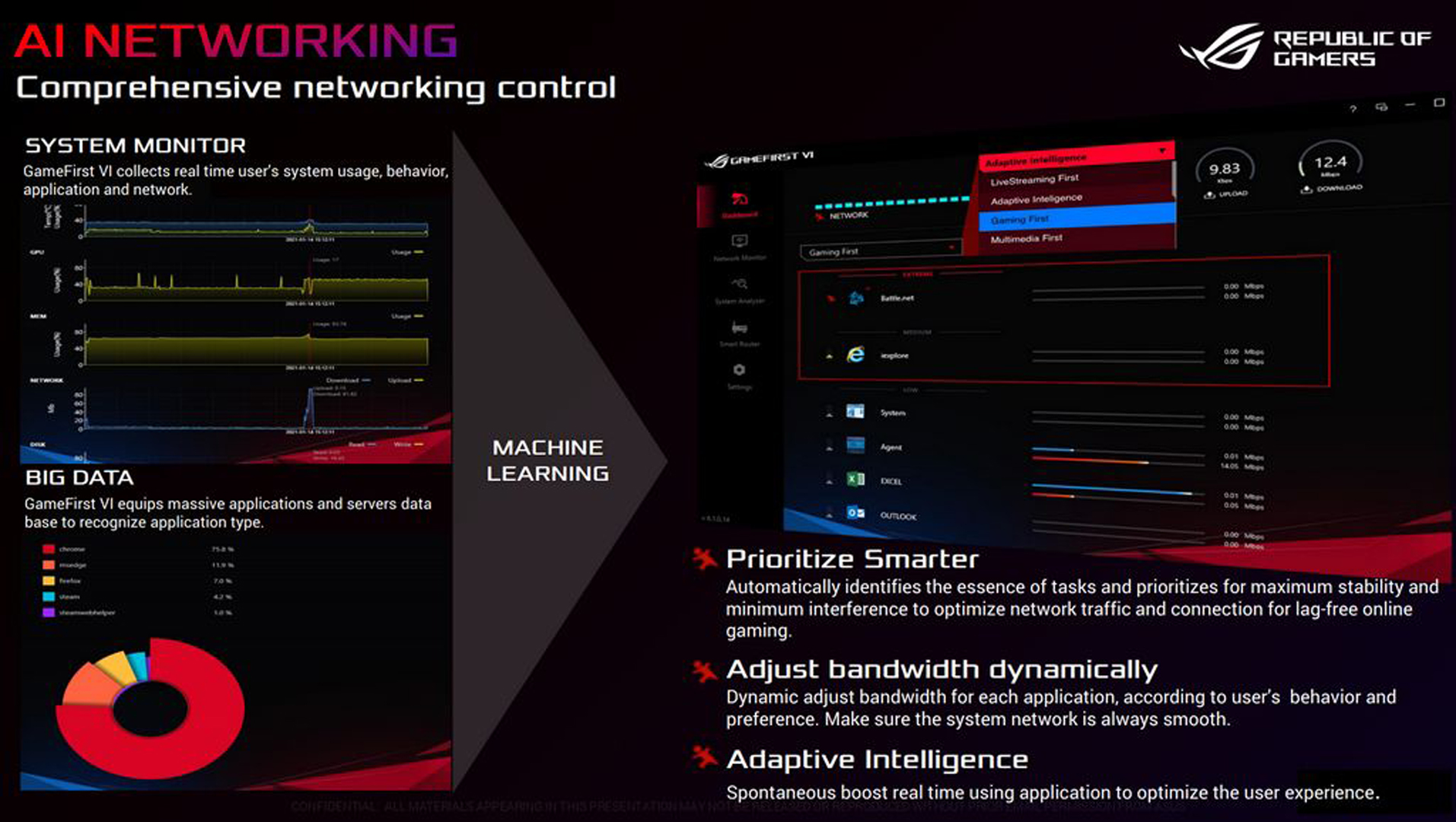
AI Noise Cancelation intelligently reduces distracting keyboard noise, mouse clicks and other environmental noises, allowing gamers to hear and be heard clearly while gaming or on a call.
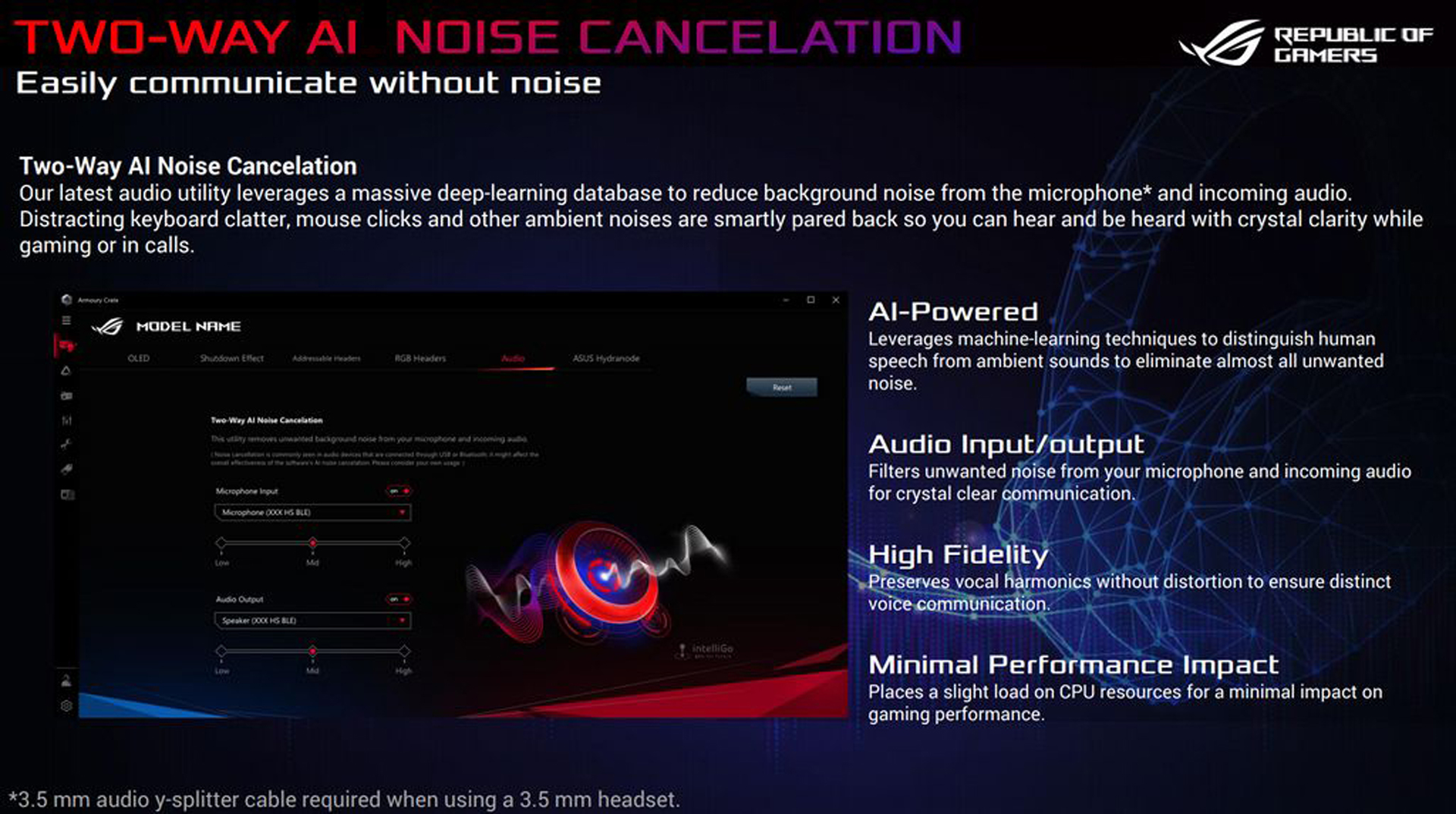
In addition, these motherboards include the Memtest86 program directly in the BIOS, a program that should be no stranger to overclockers. Memtest86 is a free and open-source memory testing software that is used to test the stability of memory and is a popular overclocking test tool among overclockers around the world. Of course, it is also one of the essential tools for computer repair departments around the world.
This time, the motherboard we got are the ROG Maximus XIII Hero(M13H), Z590-E Gaming WIFI and Z590-A Gaming WIFI from Asus. The M13H is the mainstay of the four first released models, the other three models are Gene, Extreme and Apex. as Maximus series of high-end products, both power supply, IO or cooling and RGB lighting can be described as luxury.
The Z590-E has a similar board shape to the M13H, except that it also has 4 x M.2 slots, the same WIFI chip and LAN chip, and a slightly lower configuration than the M13H. The Z590-A has a cartoon character attached to it in Asia, but in Europe and the US and ANZ it is much simpler, with 3 x M.2 slots but the WIFI chip is Intel AX200, which is not supported WIFI-6E specification, and the rest of the configuration is slightly lower than the Z590-E. It is important to mention that Asus has not compromised on the power supply of the mid-range motherboard, M13H, Z590-E and Z590-A all use 14+2+1 phases power; the LAN part is different in terms of the number of ports, and the chips also use 2.5Gb Intel I225-V.
So, let’s take a look at the details!
Product Specification
Asus ROG Maximus XIII Hero Tech Specs from Official Website
HERE
Package appearance
The whole package design of MAXIMUS XIII Hero is nearly the same as their previous version
Package Front
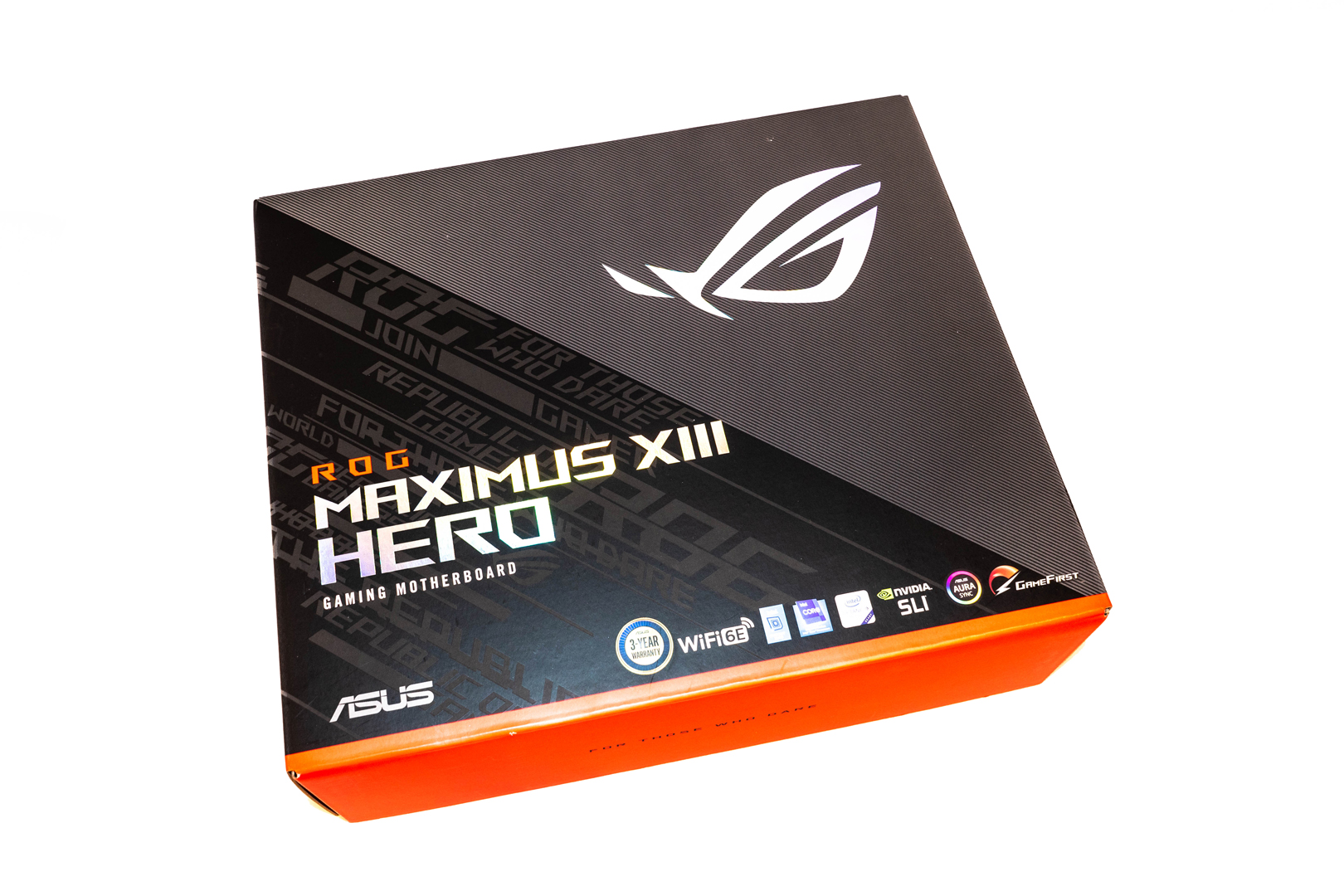
Opening the box
The accessories including the instruction guide, a greeting card, an ROG sticker, a driver CD, a key strip, RGB extension cable, fan/RGB expansion I/O cable, Wifi antenna etc
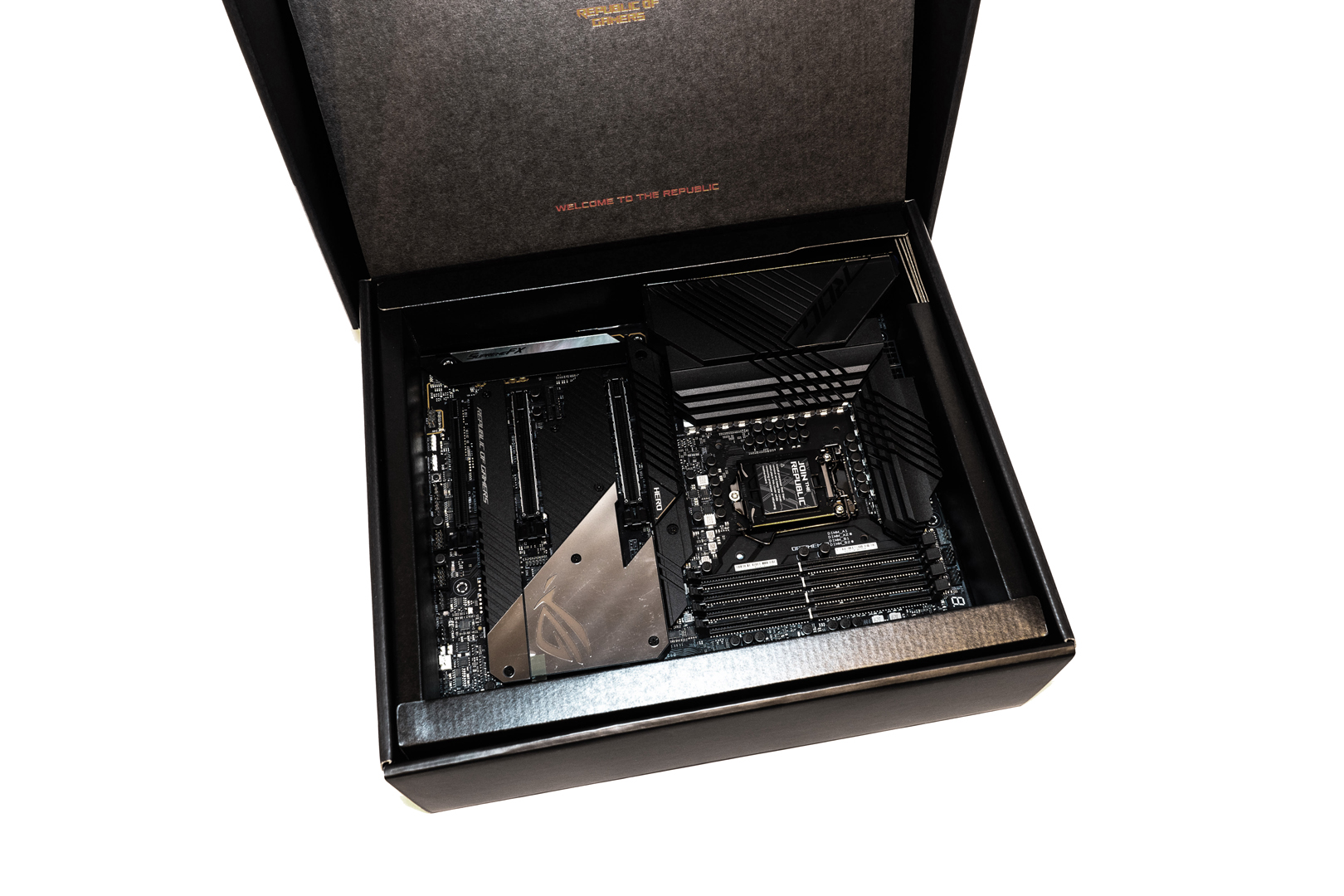
Product Analysis
The front and back look
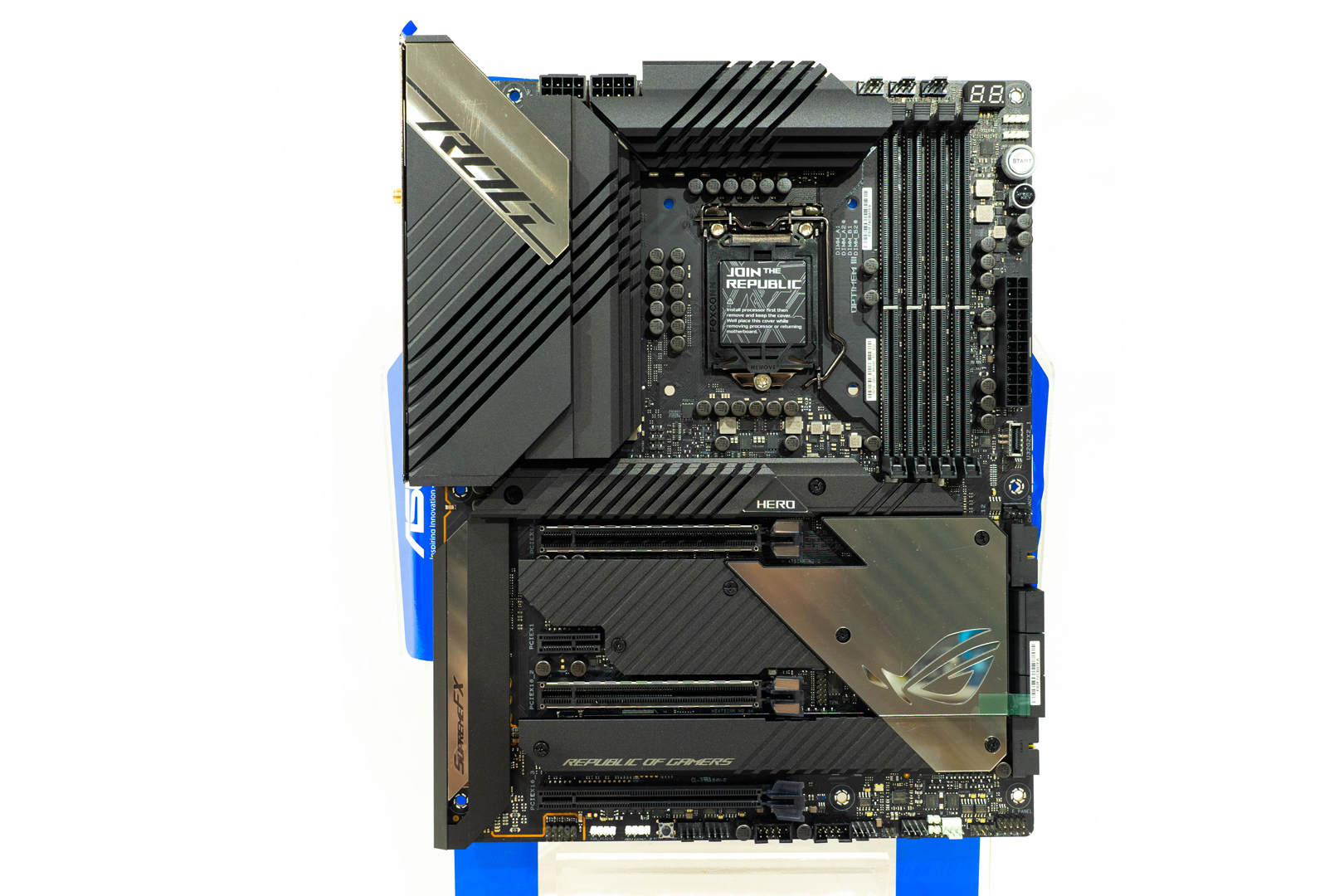
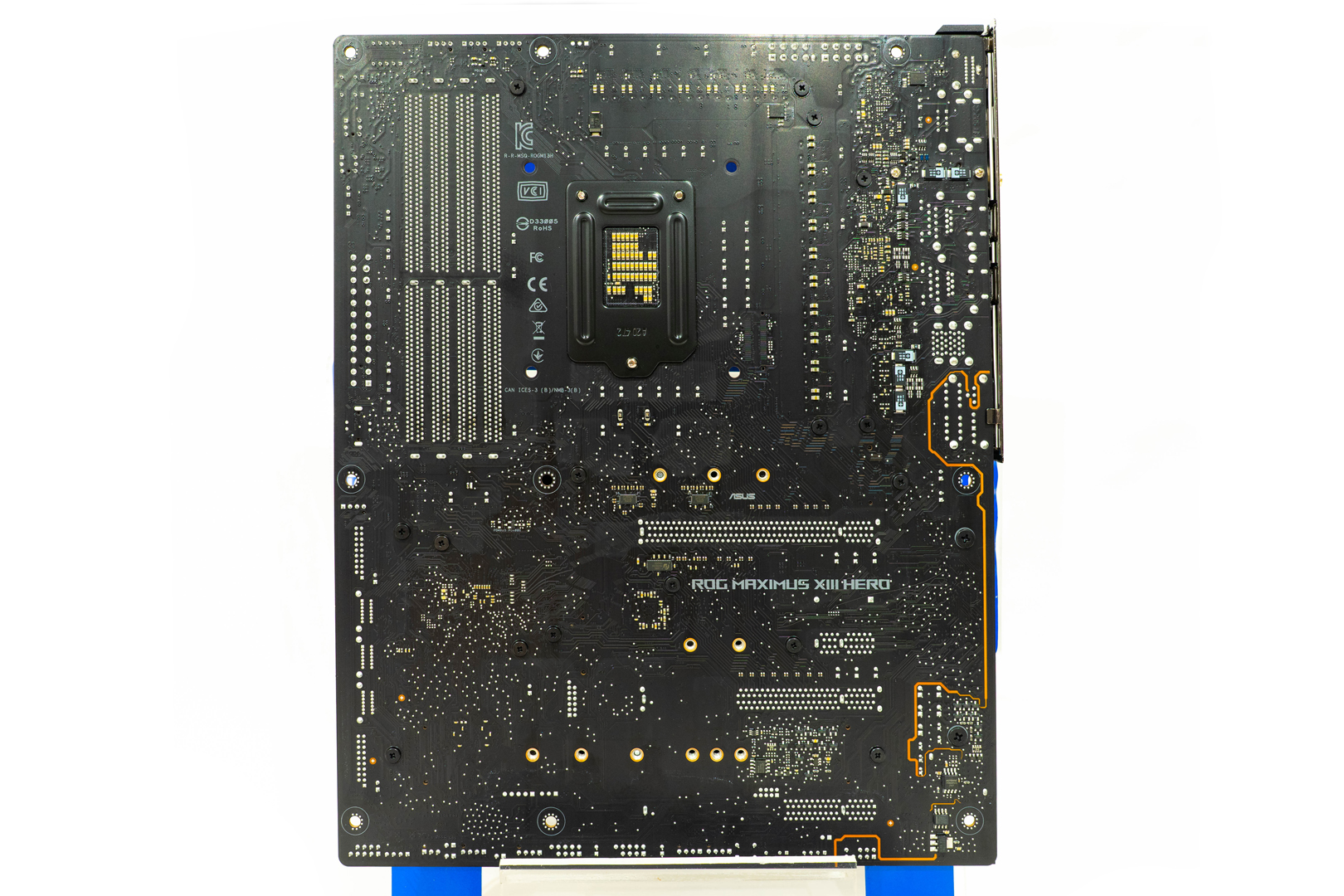
The top I/O includes 2 x 8-pin CPU power socket with ProCool shields and a total of 7 fan headers, 1 x debug digitizer
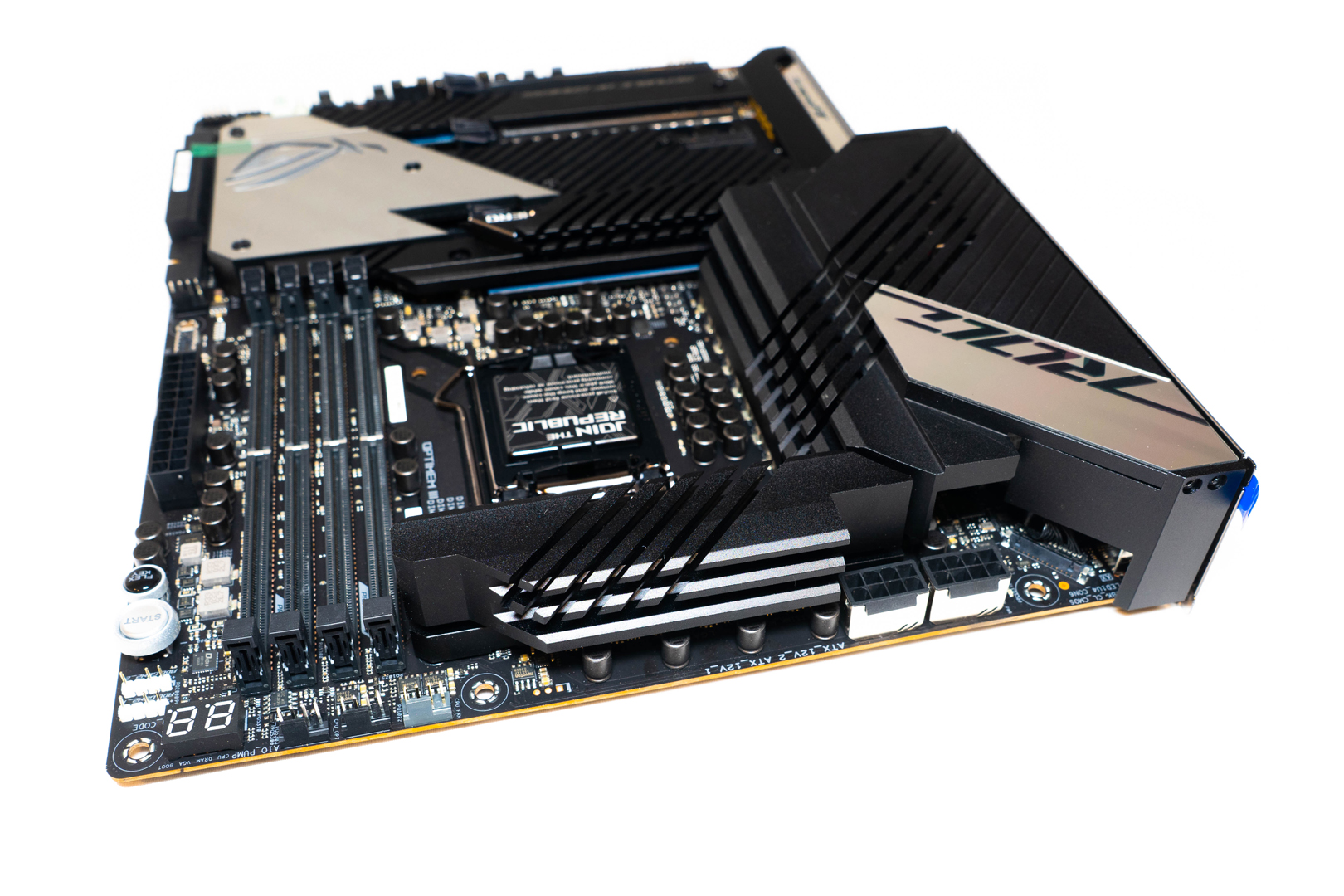
The side I/O – In this area of the motherboard, we can find 2 x USB 3.2 Gen 1 headers, 6 x SATA3 ports, 1 x USB 3.2 Gen 2×2 socket, 24pin power socket, power&reset button and 2 x ARGB header

The rear I/O :
2 x Thunderbolt™ 4 USB Type-C® port(s)
6 x USB 3.2 Gen 2 port(s) (6 x Type-A)
2 x USB 2.0 port(s) (2 x Type-A)
1 x HDMI™ port
1 x ASUS Wi-Fi Module
2 x Intel® I225-V 2.5Gb Ethernet
5 x Gold-plated audio jacks
1 x Optical S/PDIF out port
1 x BIOS FlashBack™ button
1 x Clear CMOS button

The bottom I/O, includes HD audio header, 1 x RGB header, 1 x ARGB header, on-board retry button, 5 x fan headers including water flow and pump header, 1 x Water Out header, 2 x USB 2.0 headers and a Thermal Sensor header

This motherboard includes 4 x M.2 SSD slots, all M.2 slots are have bottom metal thermal conductor.
The M.2_1 port only supports PCIe Gen4 x4 mode by Intel’s 11th gen CPU, this slot will be disabled for other CPUs
The M.2_2 port supports PCIe Gen4 x4 under 11th gen CPU, PCI3 Gen3 x4 under 10th gen CPU
The M.2_3 port only supports PCIe Gen3 x4
The M.2_4 port supports both PCIe Gen3 x4 and SATA(shared with SATA3_5&6 ports)

The M.2 SSD full metal heat sinks

The rear IO shield VRM heatsink with ROG RGB logo
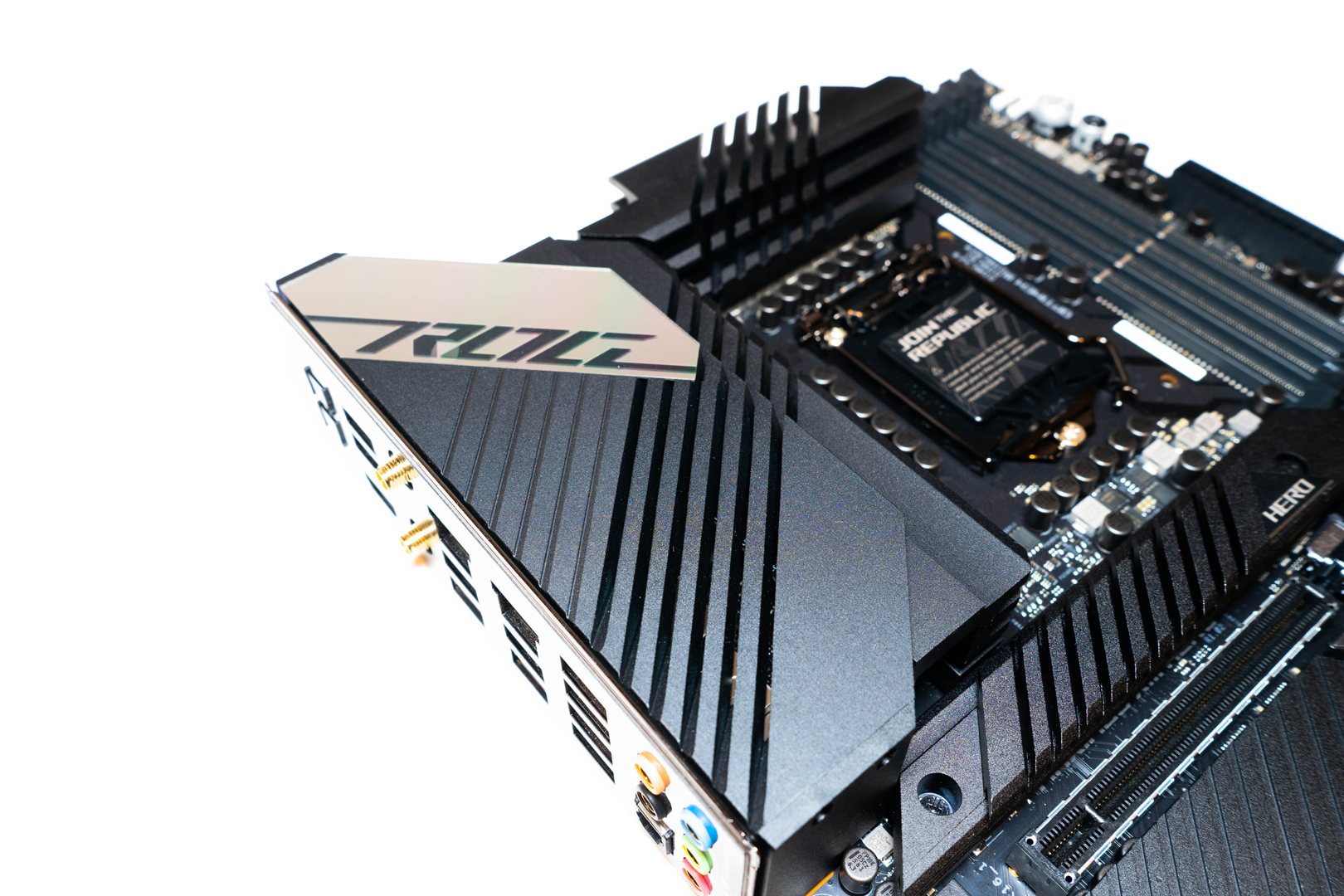
The new flip designed WIFI-6E antenna

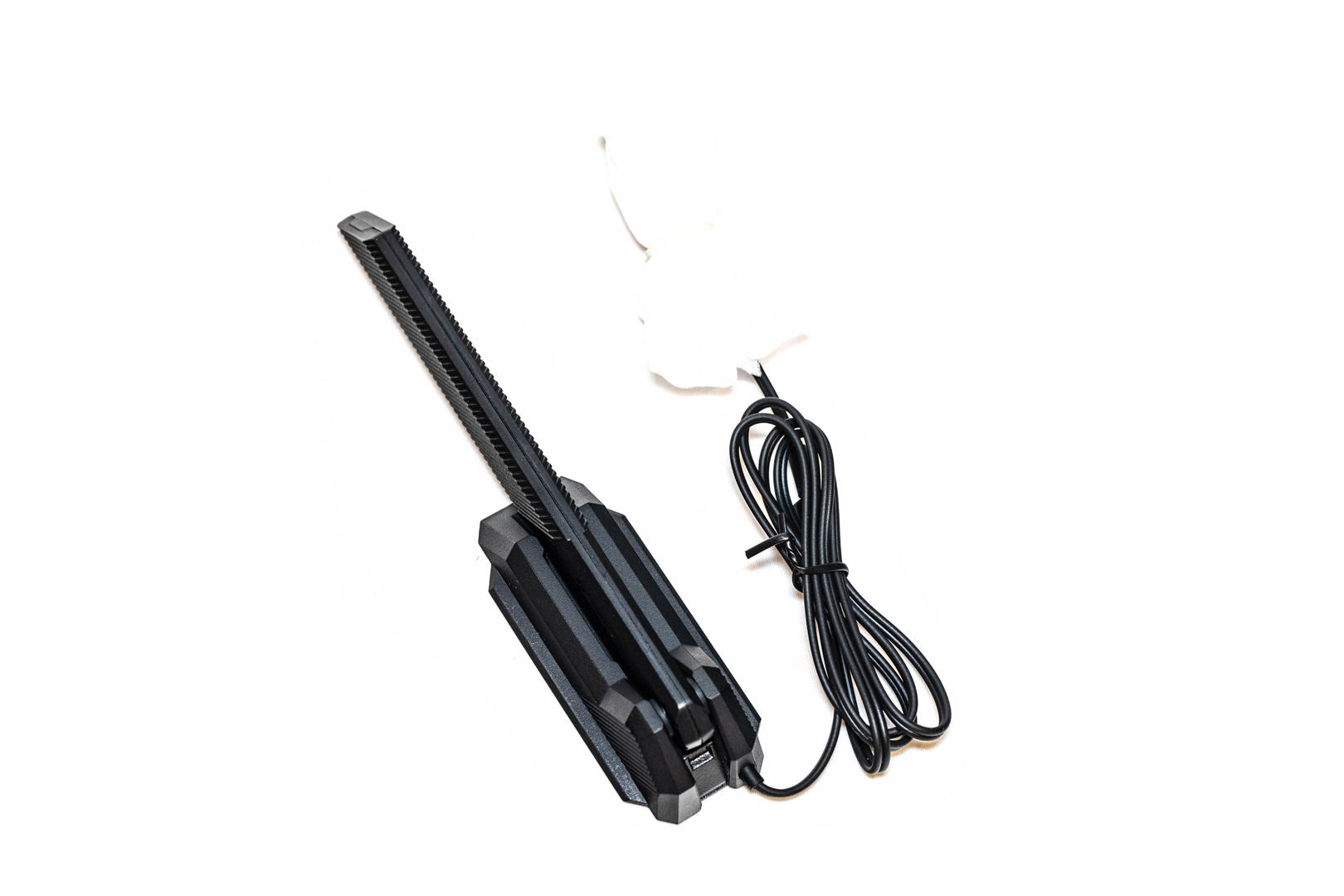
Asus’ PCIe slot latches have been criticised by consumers for a long time, but Asus still insists on using them, not only changing the surface of the latch to the metal this time but also providing a metal push bar that is normally used as a holder of the graphics card. When the card needs to be pulled out, it can be used as a lever to push the latch to free the card. We don’t know if Asus will warranty this motherboard if we accidentally slip with this tool and poke off the component next to it
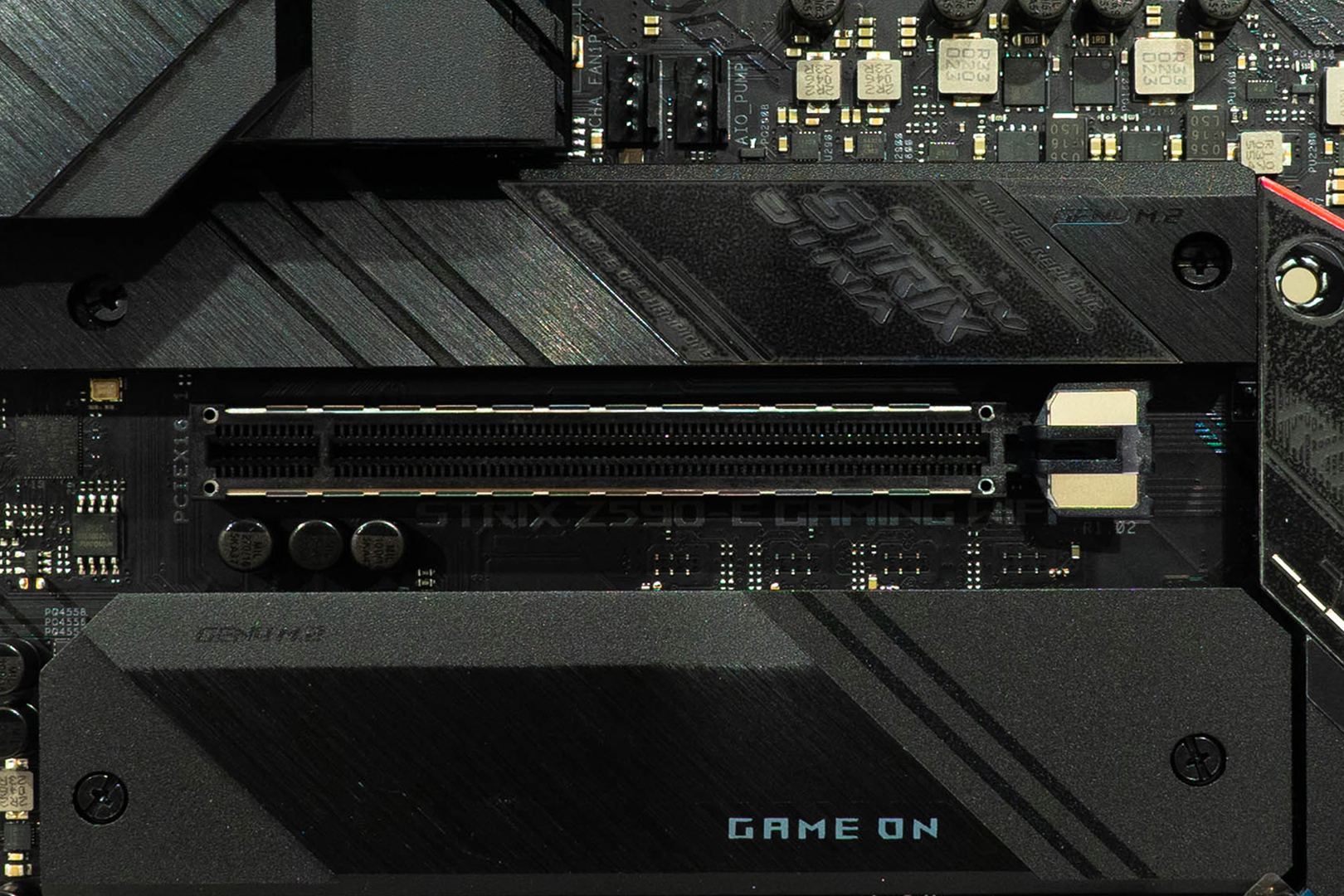
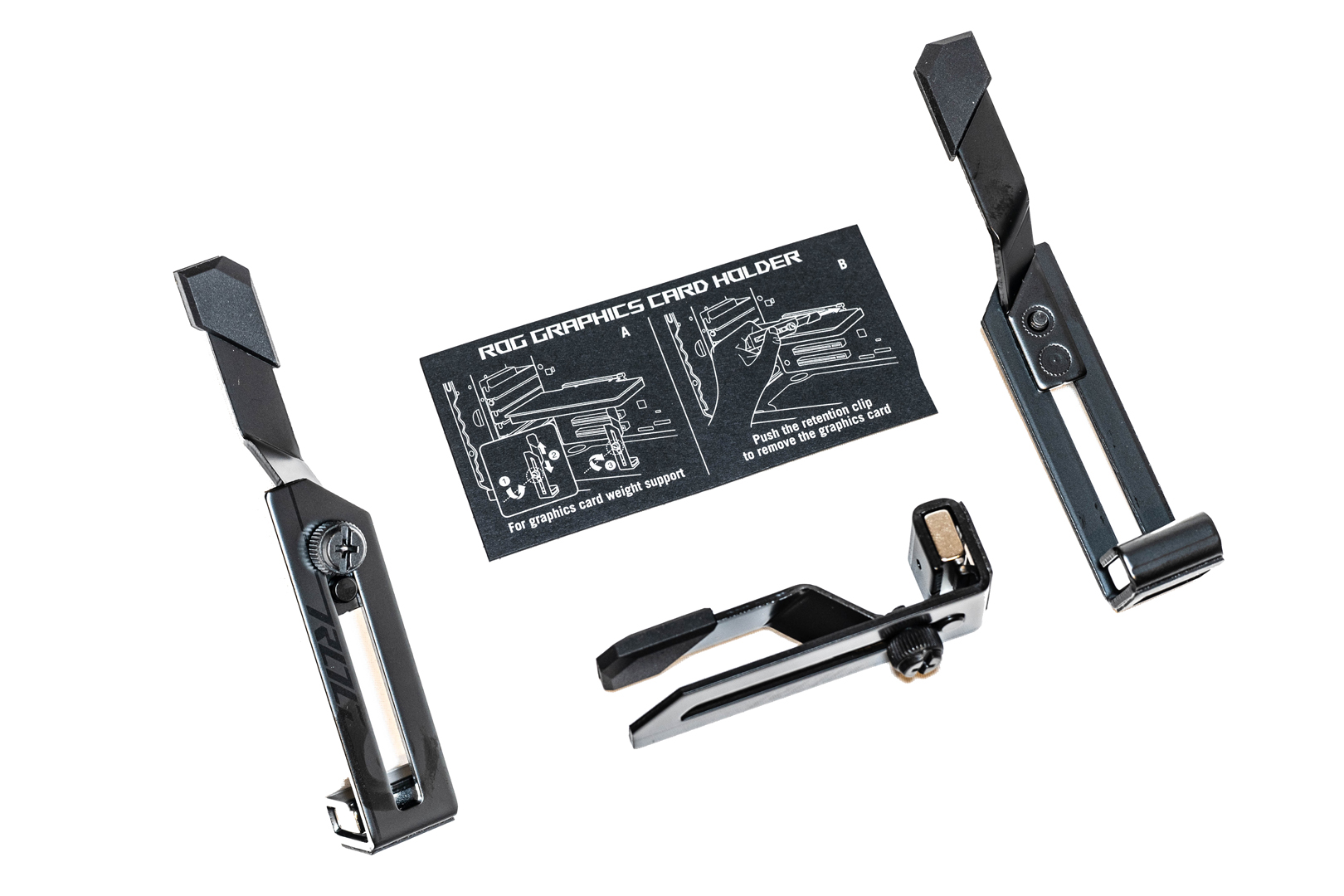
The main processor power controller chip is the Intersil ISL69269, it adopts a 14+2+1-phase, three-way CPU core power supply. The distribution on the motherboard is 7 parallel 14-phase CPU core + 2-phase integrated graphics + 1-phase Vccsa, the “Dr.Mos” chip is 95410RRB from Texas Instruments, single-phase 90A maximum current and total of 1440A
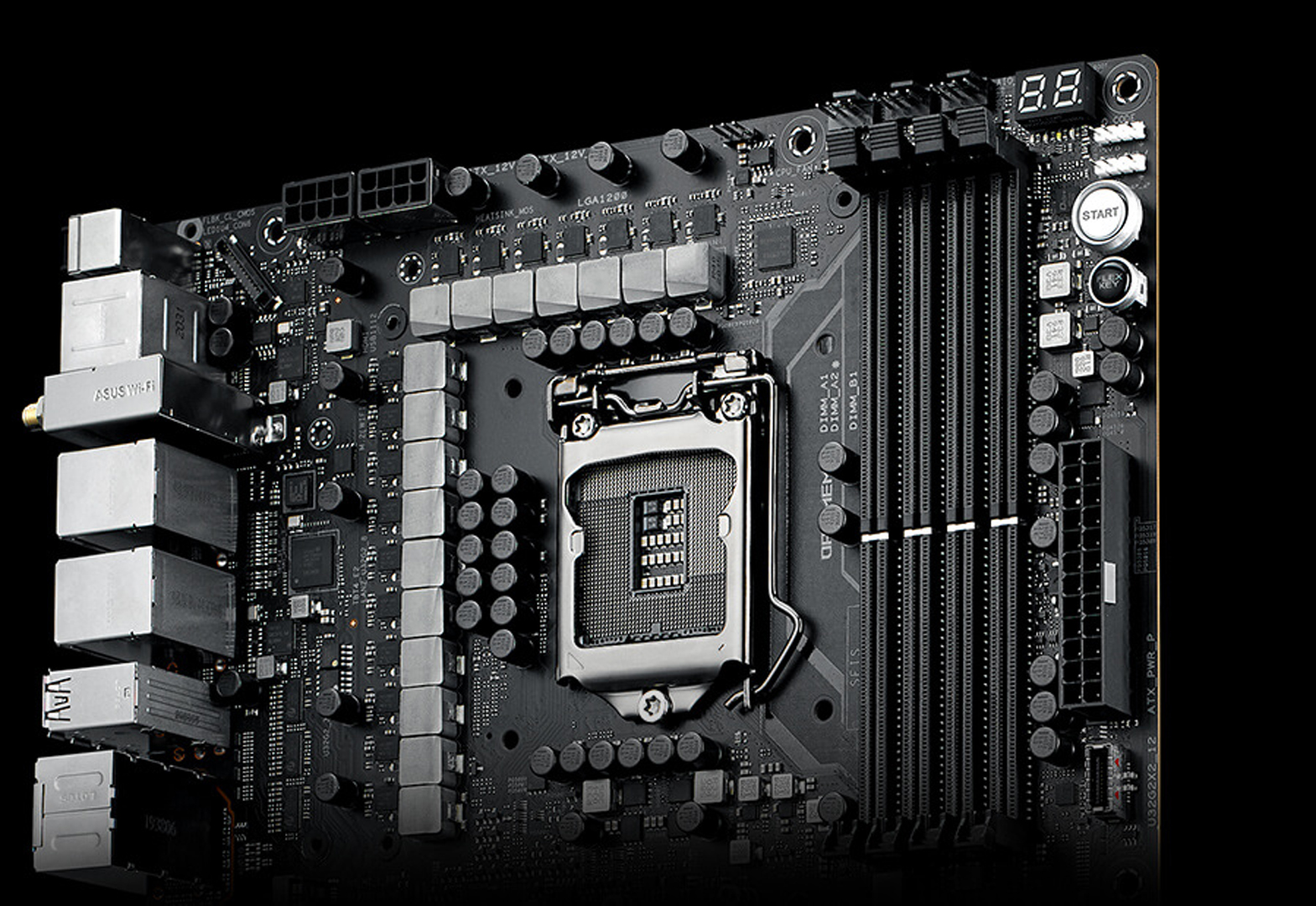
The ASUS SupremeFX supported sound card is ALC4082 from Realtek with ESS Sabre 9018Q2C DAC/AMP, it also uses the famous golden capacitors from Nichicon
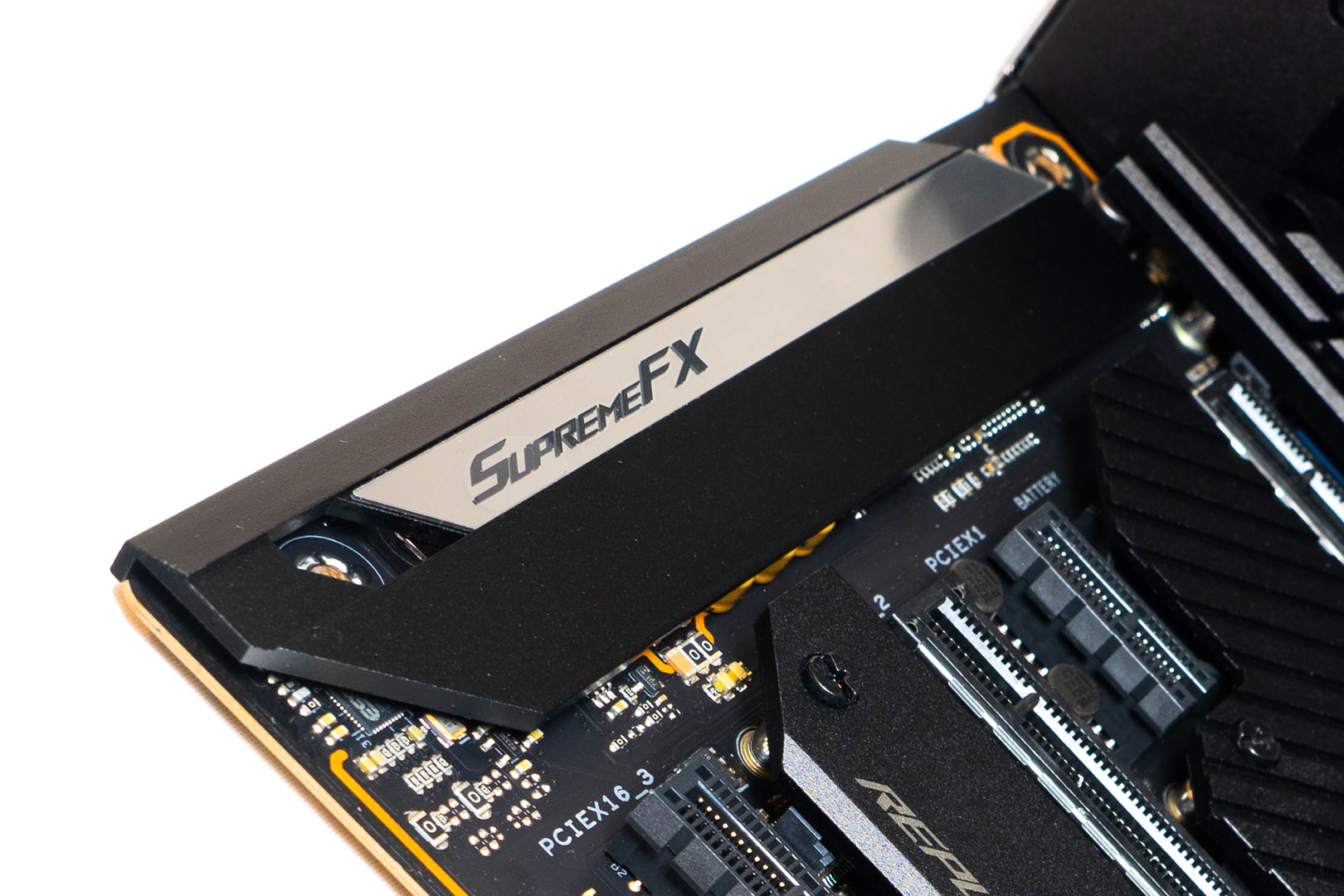
The LGA 1200 slot of Intel’s 10/11th gen Core desktop processor
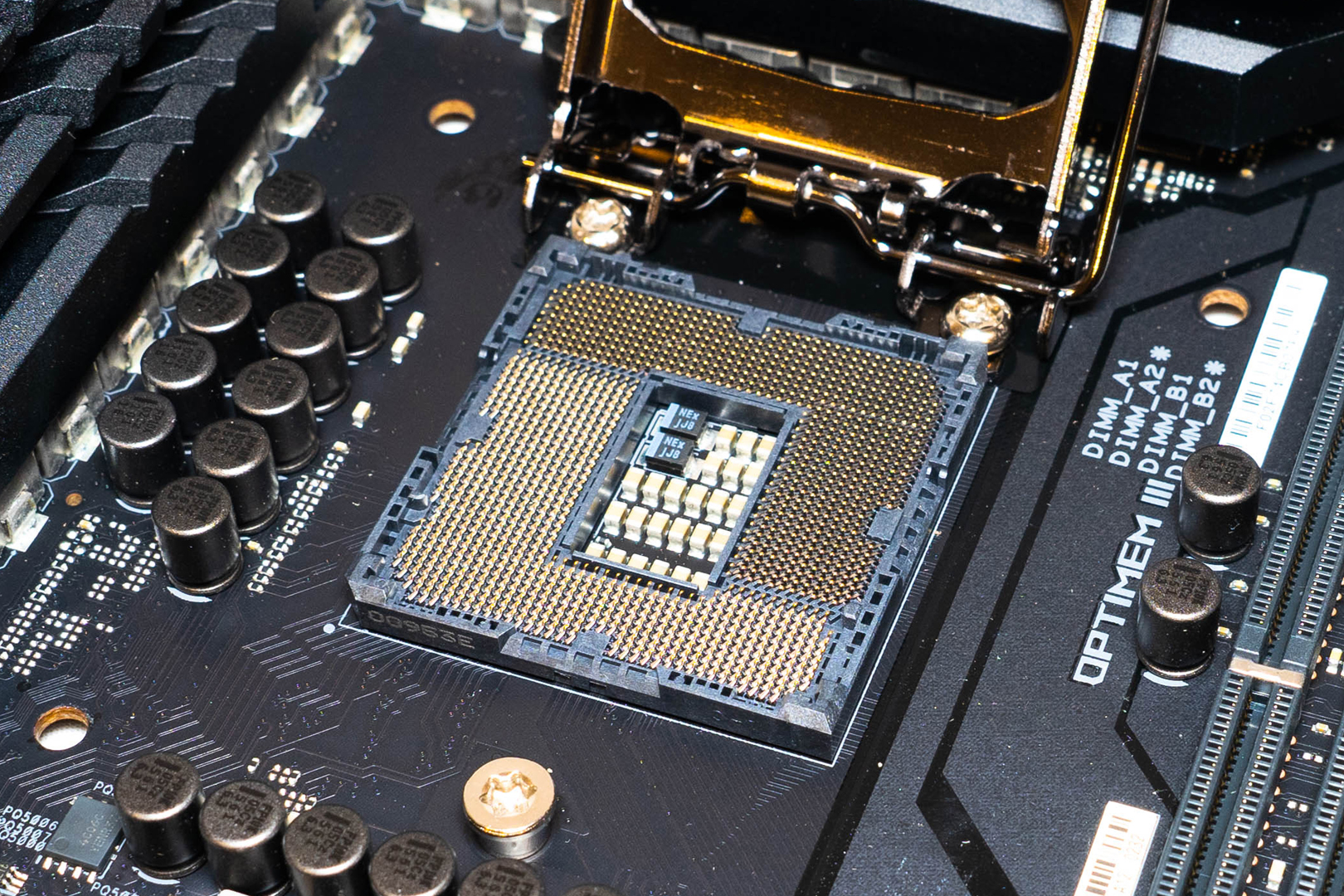
——————————————————-
Product Specification
Asus ROG Z590-E Tech Specs from Official Website
HERE
Package appearance
The whole package design of Z590-E is nearly the same as their previous version, the box has some more ROG design elements and the colour scheme is more like the effect of RGB lighting turned on
Package Front
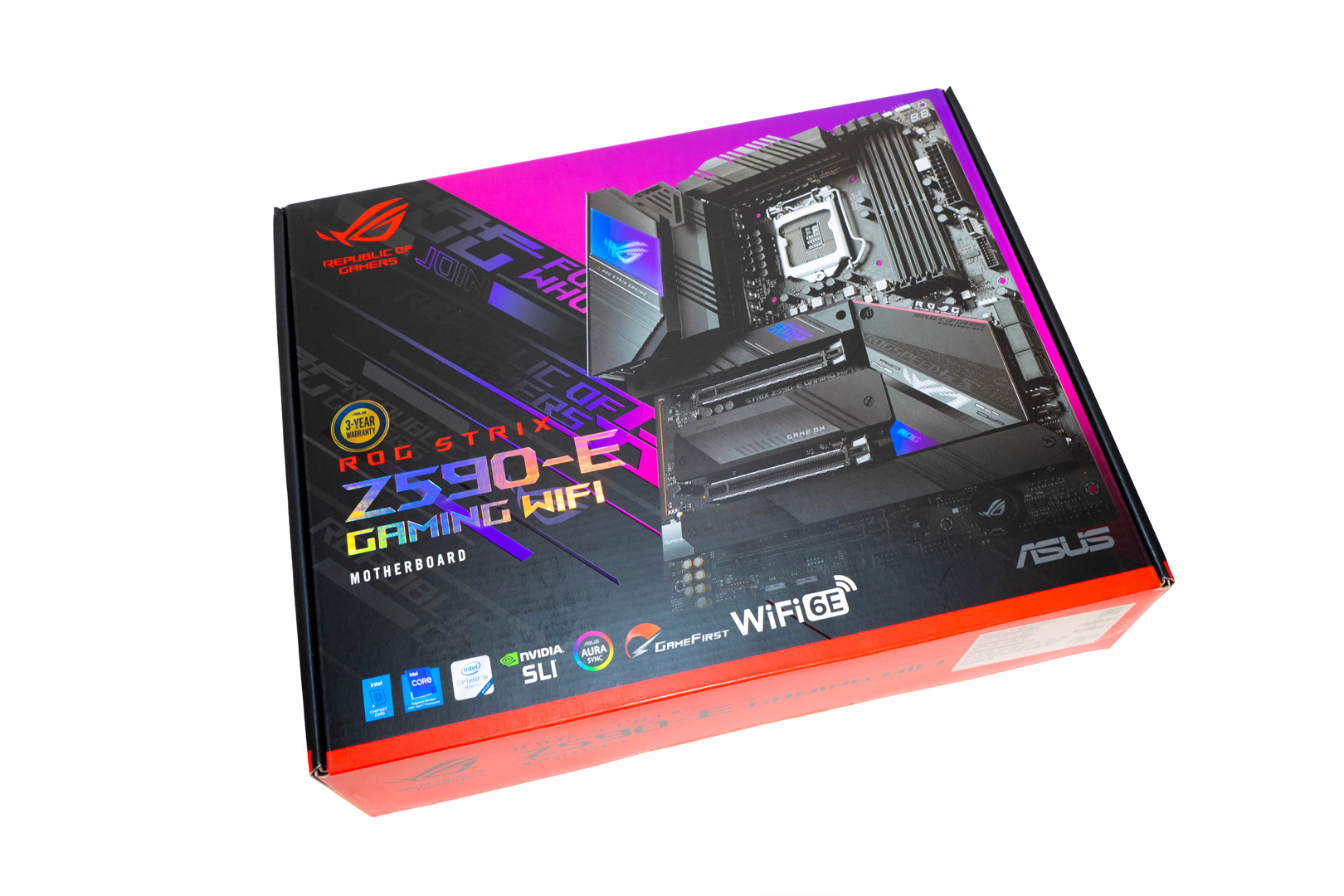
Opening the box
The accessories are identical to M13H, including the instruction guide, a greeting card, a ROG sticker, a driver CD, a key strip, RGB extension cable, fan/RGB expansion I/O cable, Wifi antenna and the VRM cooling kit etc
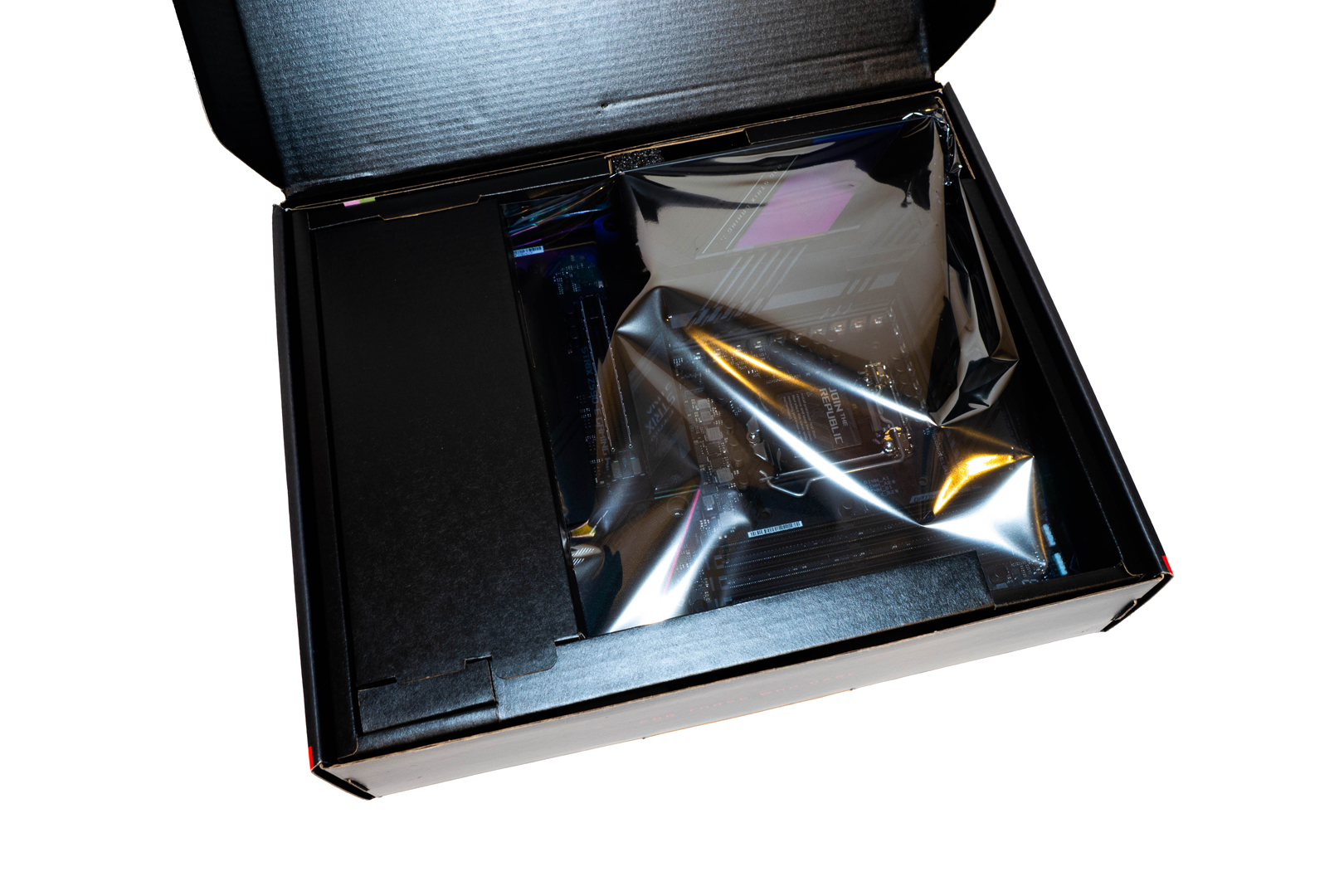
Product Analysis
The front and back look

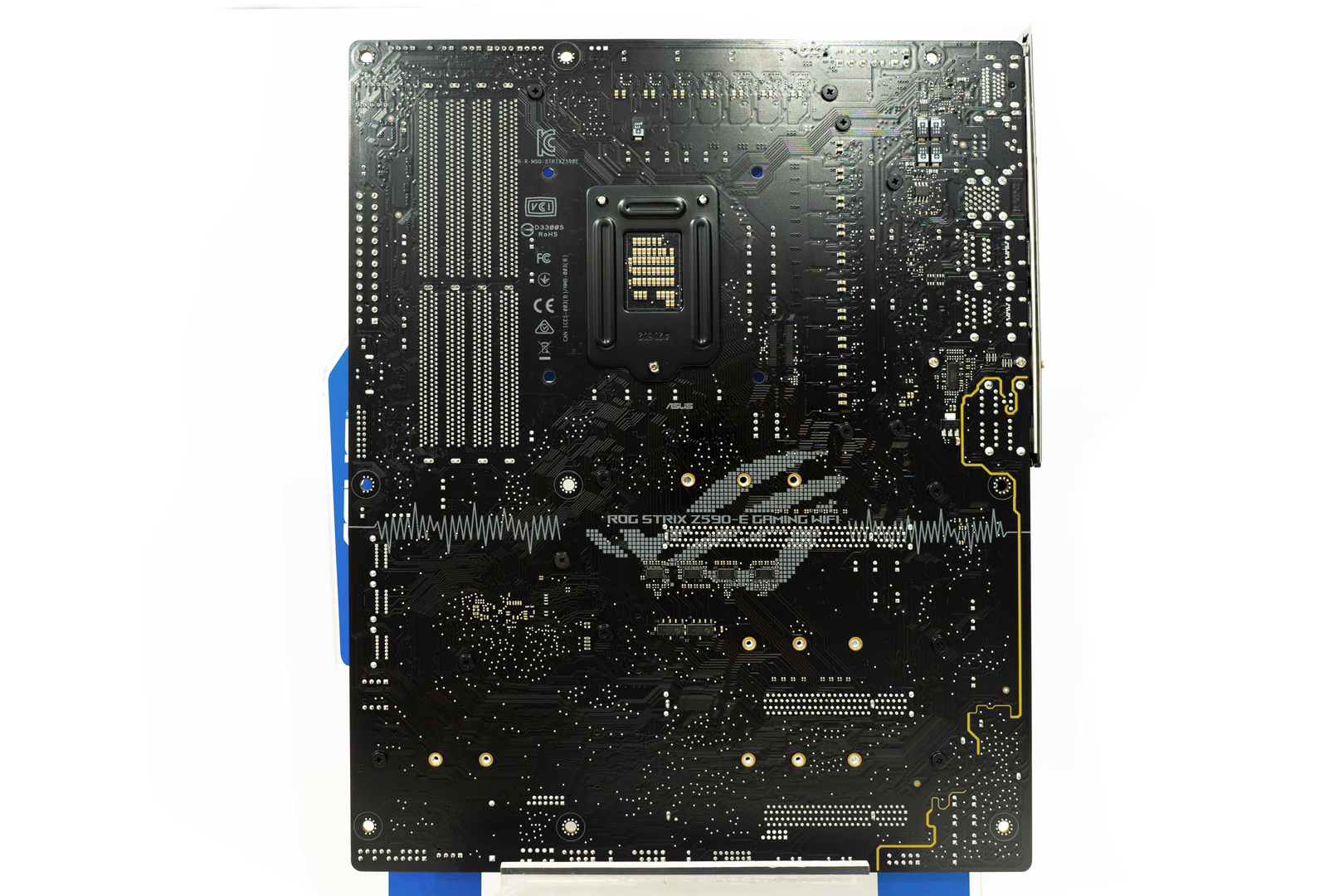
The top I/O includes 1×8-pin(with ProCool shields) + 1×4-pin CPU power socket, 3 x fan headers, RGB & ARGB socket and CPU OV header
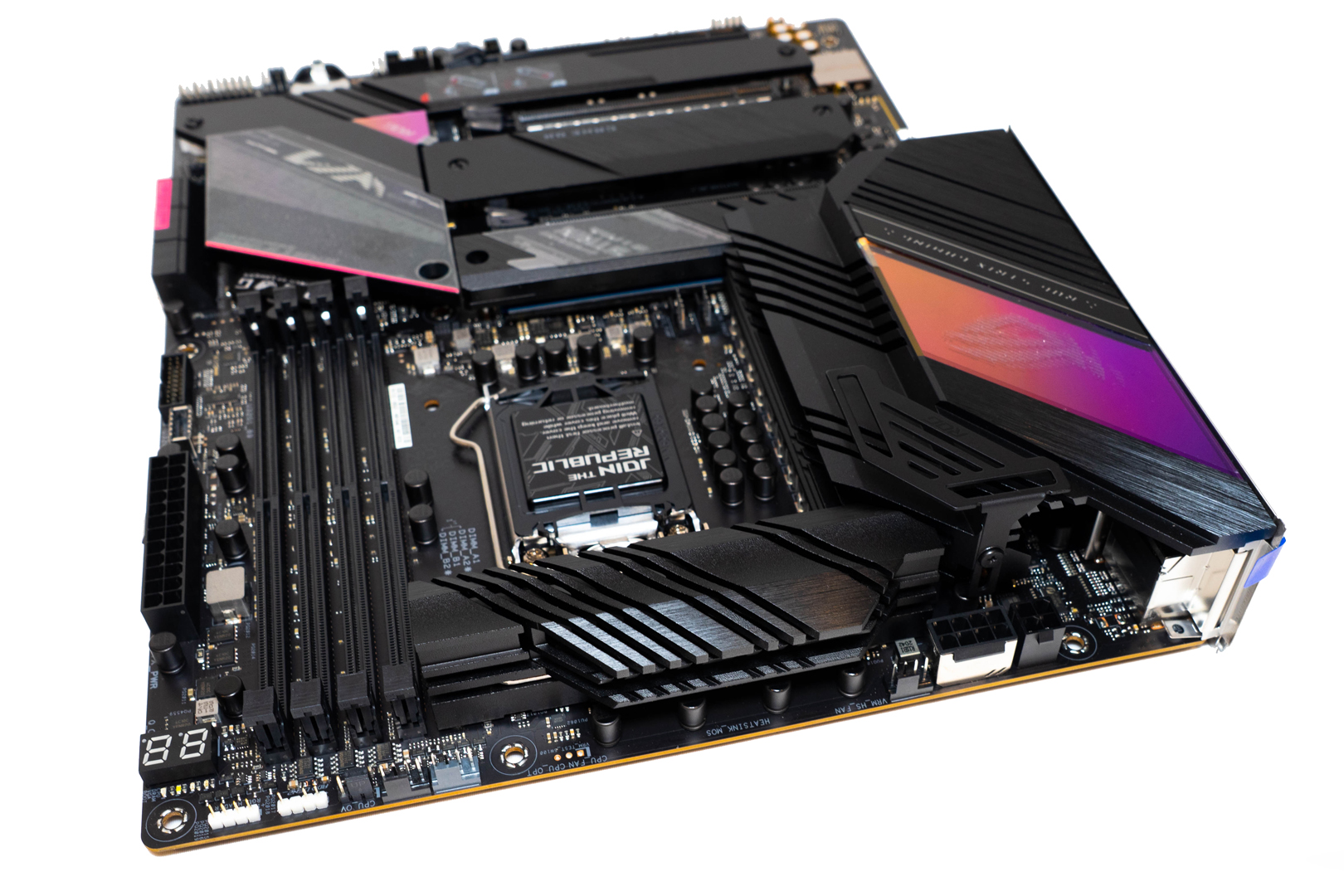
The side I/O – In this area of the motherboard, we can find 2 x fan header, 6 x SATA3 ports, a USB 3.2 Gen 1 header, a USB 3.2 Gen 2×2 socket, 24pin power socket and debug digitiser

The rear I/O :
1 x USB 3.2 Gen 2×2 port (1 x USB Type-C®)
3 x USB 3.2 Gen 2 port(s) (2 x Type-A, 1 x USB Type-C® )
4 x USB 3.2 Gen 1 port(s) (4 x Type-A)
2 x USB 2.0 port(s) (2 x Type-A)
1 x HDMI™ port
1 x DisplayPort
1 x Intel® Wi-Fi 6E
2 x Intel® I225-V 2.5Gb Ethernet
5 x Gold-plated audio jacks
1 x Optical S/PDIF out port
1 x BIOS FlashBack™ button
1 x Clear CMOS button

The bottom I/O, includes HD audio header, 2 x ARGB headers, a Thunderbolt 4 header, 2 x USB 2.0 headers and a pump header

This motherboard includes 4 x M.2 SSD slots
The M.2_1 port only supports PCIe Gen4 x4 mode by Intel’s 11th gen CPU, this slot will be disabled for other CPUs
The M.2_2 port supports PCIe Gen4 x4 under 11th gen CPU, PCI3 Gen3 x4 under 10th gen CPU
The M.2_3 port only supports PCIe Gen3 x4
The M.2_4 port supports both PCIe Gen3 x4 and SATA(shared with SATA3_5&6 ports)
It is worth noting that only the M.2_1 slot offers the same thermally conductive metal base plate as the M13H
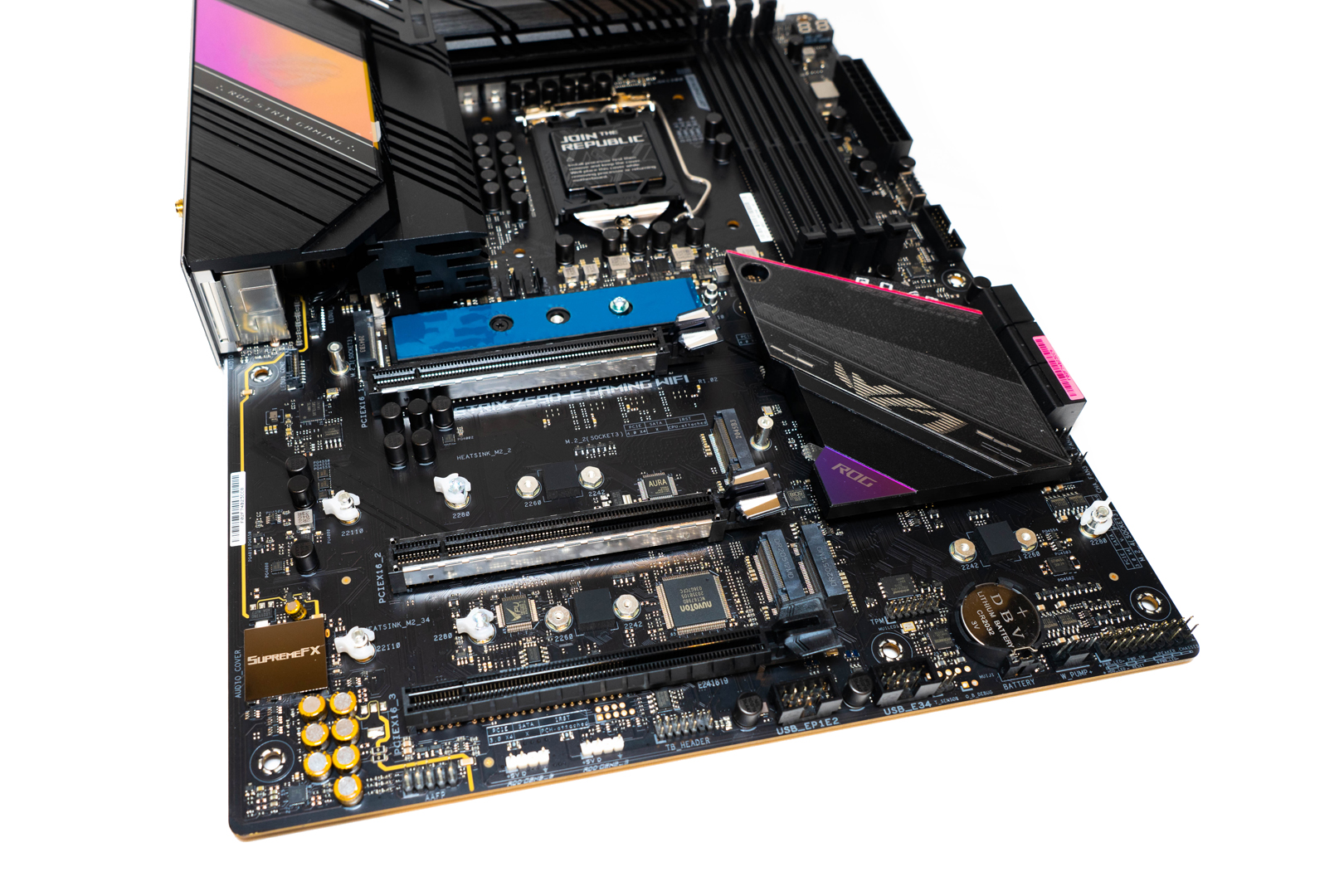
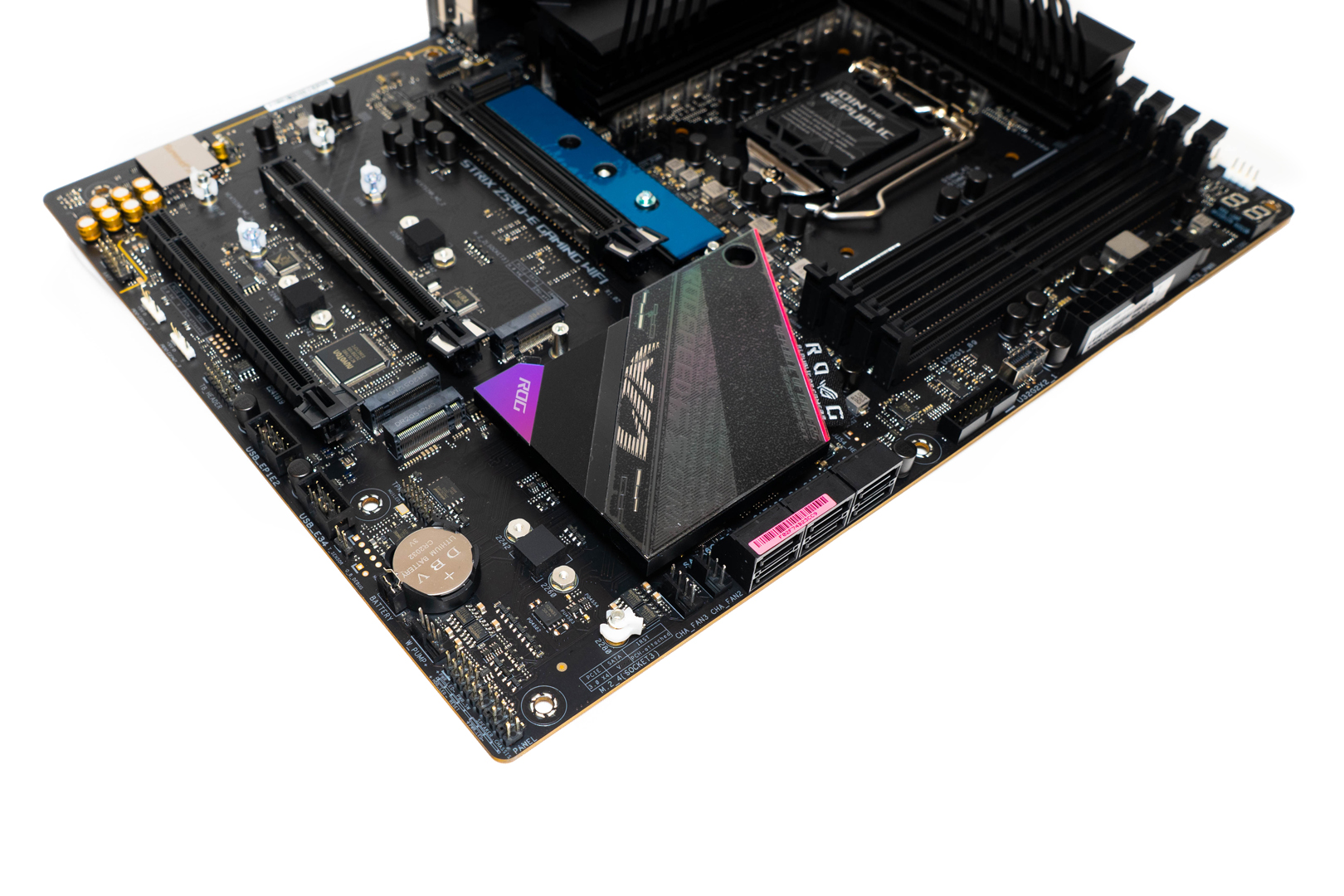
The M.2 SSD full metal heat sinks

The rear IO shield VRM heatsink with ROG RGB logo
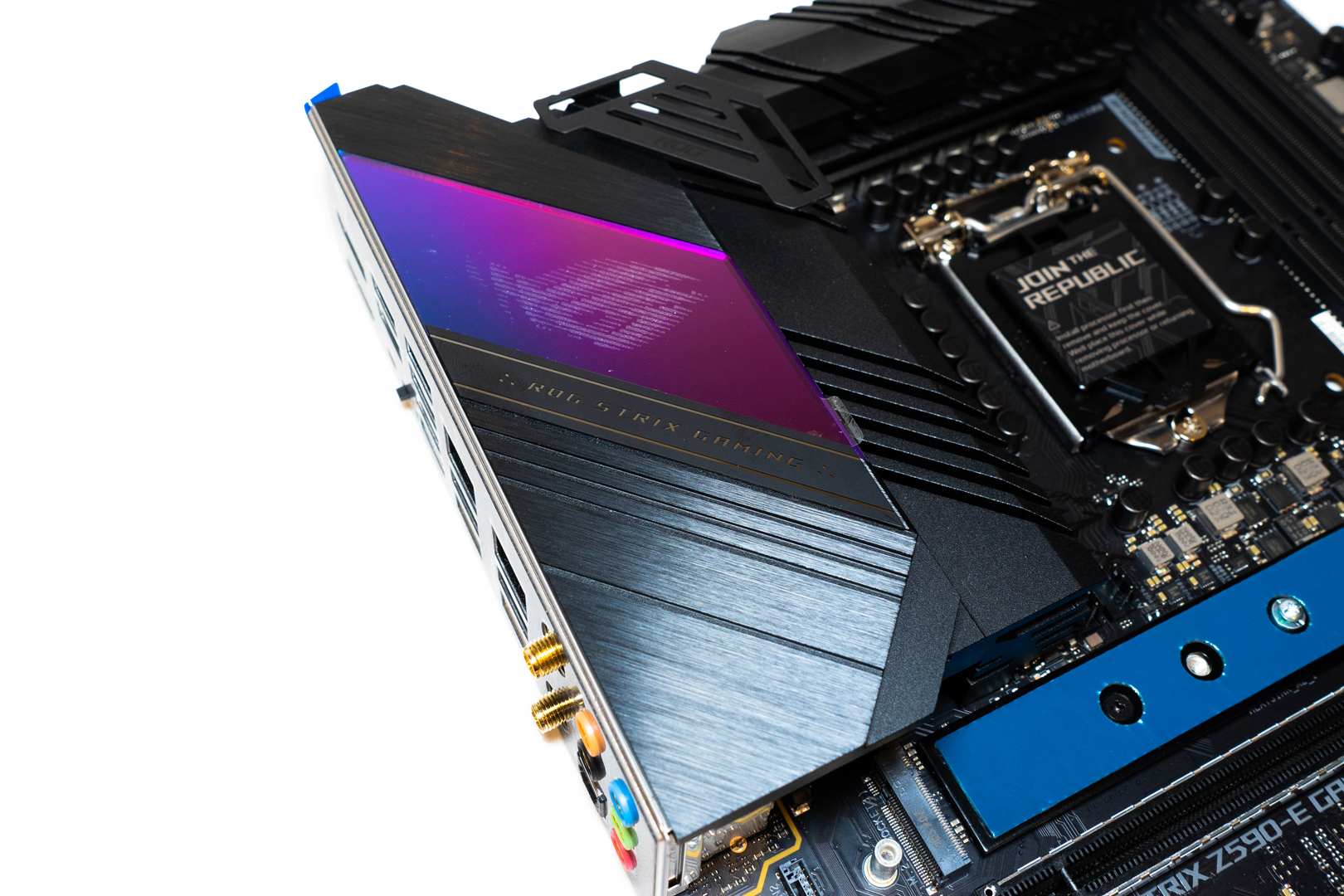
The main processor power controller chip is the Intersil ISL69269, it adopts a 14+2+1-phase, three-way CPU core power supply. The distribution on the motherboard is 7 parallel 14-phase CPU core + 2-phase integrated graphics + 1-phase Vccsa, the “Dr.Mos” chip is 95410RRB from Texas Instruments, single-phase 90A maximum current and total of 1440A
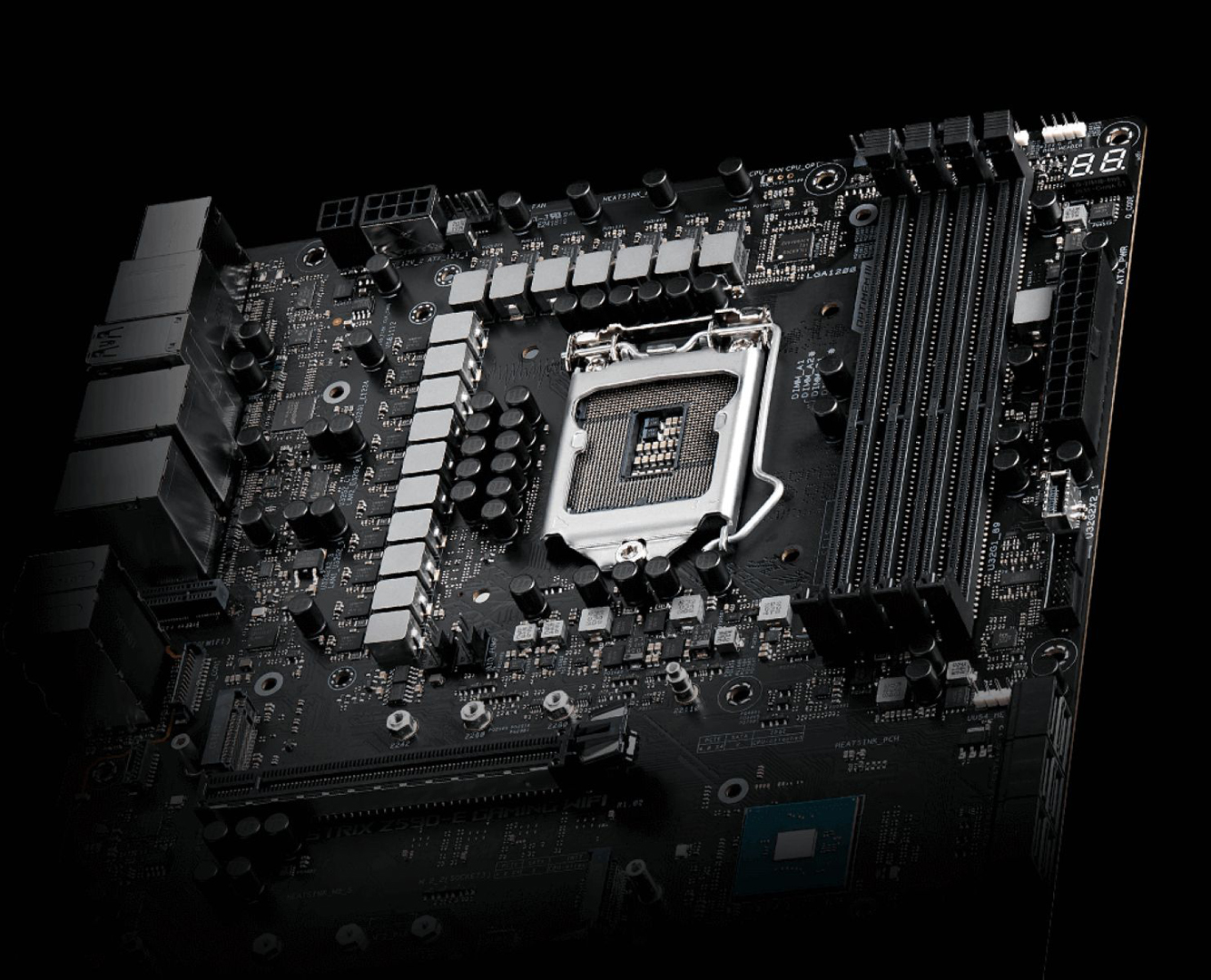
The ASUS SupremeFX supported sound card is ALC4080 from Realtek with Savitech SV3H712 AMP, it also uses the famous golden capacitors from Nichicon

The LGA 1200 slot of Intel’s 10/11th gen Core desktop processor
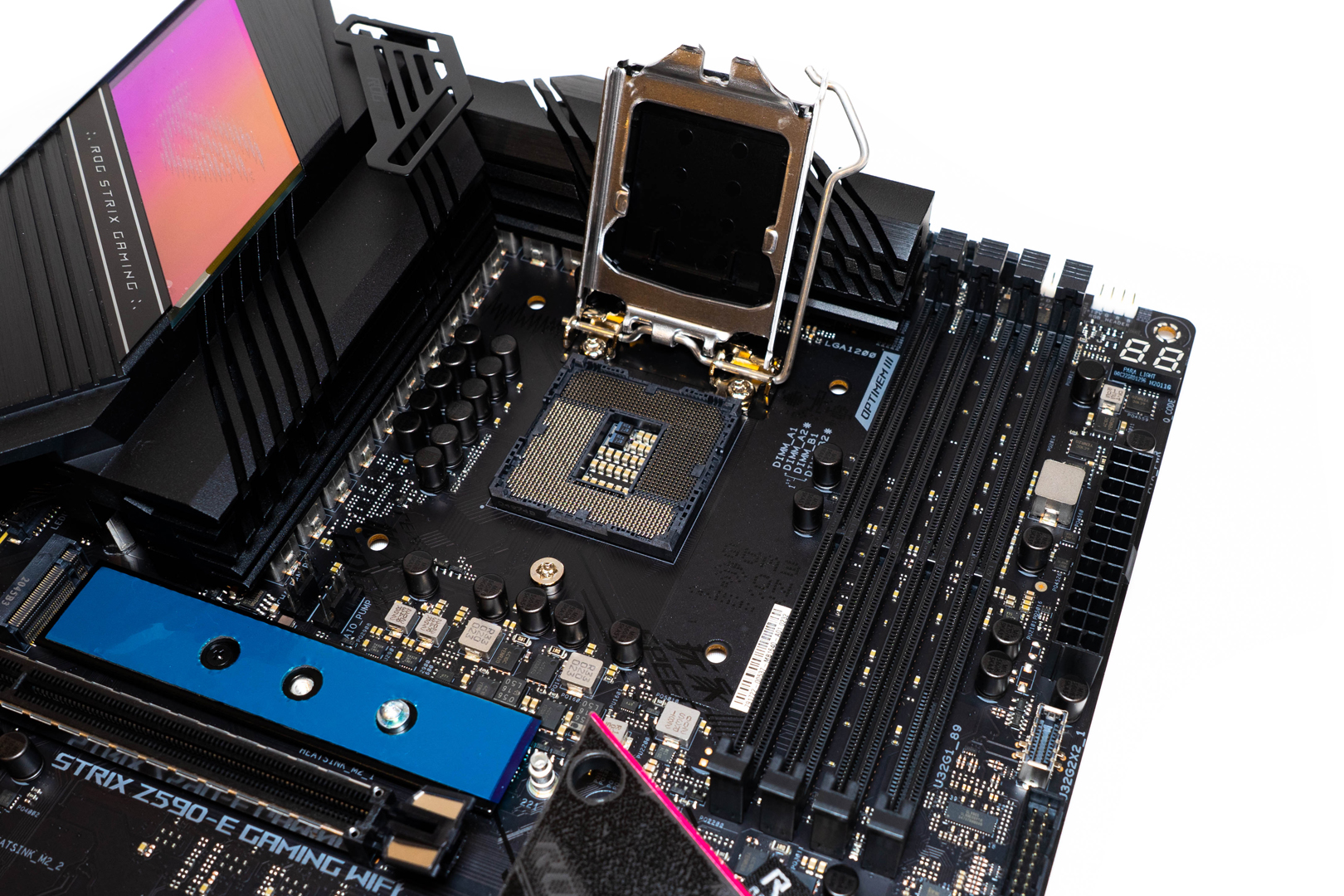
——————————————————-
Product Specification
Asus ROG Z590-A Tech Specs from Official Website
HERE
Package appearance
The whole package design of Z590-A is nearly the same as their previous version, the I/O cover has been unified into a glitch design and the RGB part has been moved to the upper part
Package Front
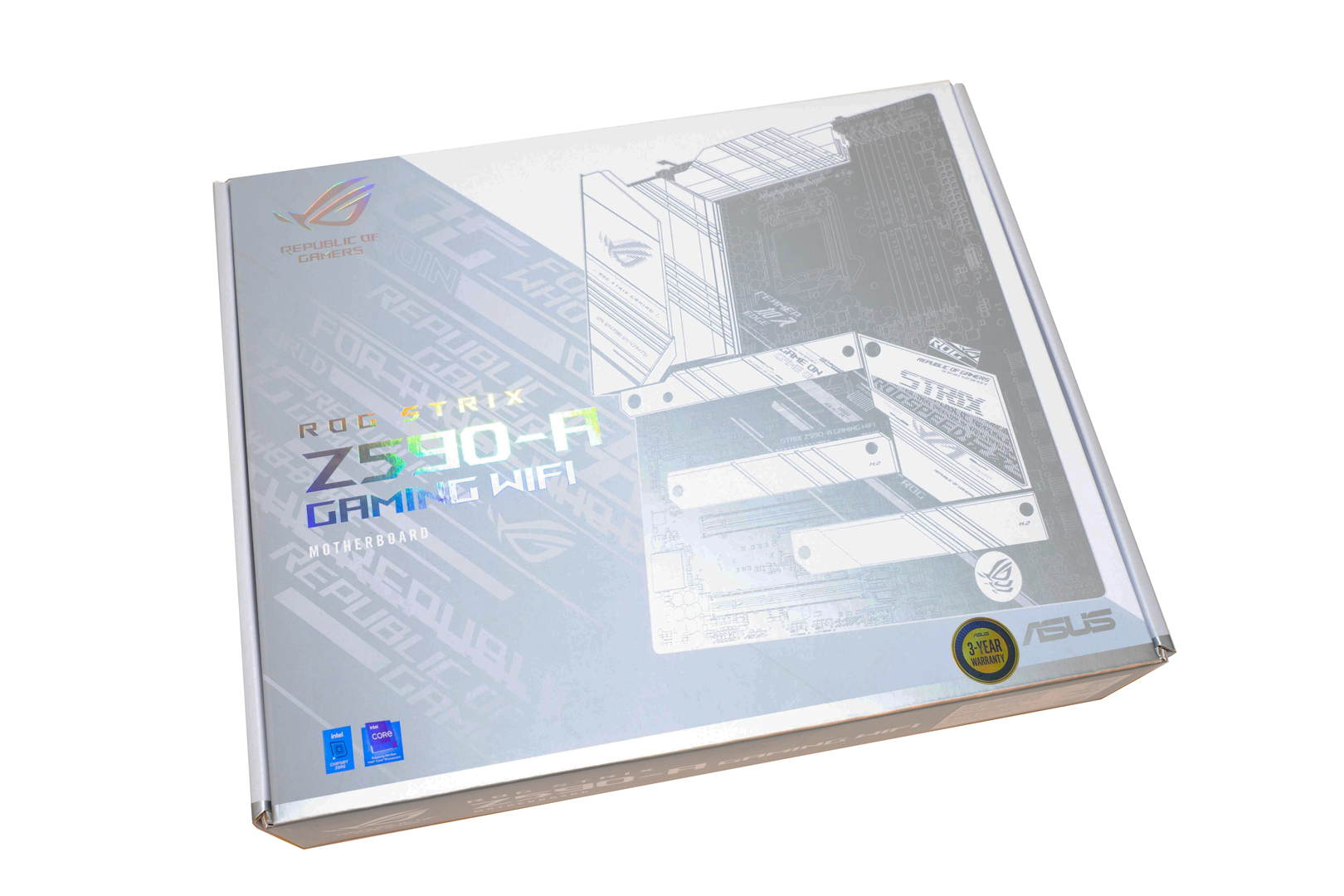
Opening the box
The accessories are not as extensive as the previous two models, the graphics card holder, cooling kit and key string are not included
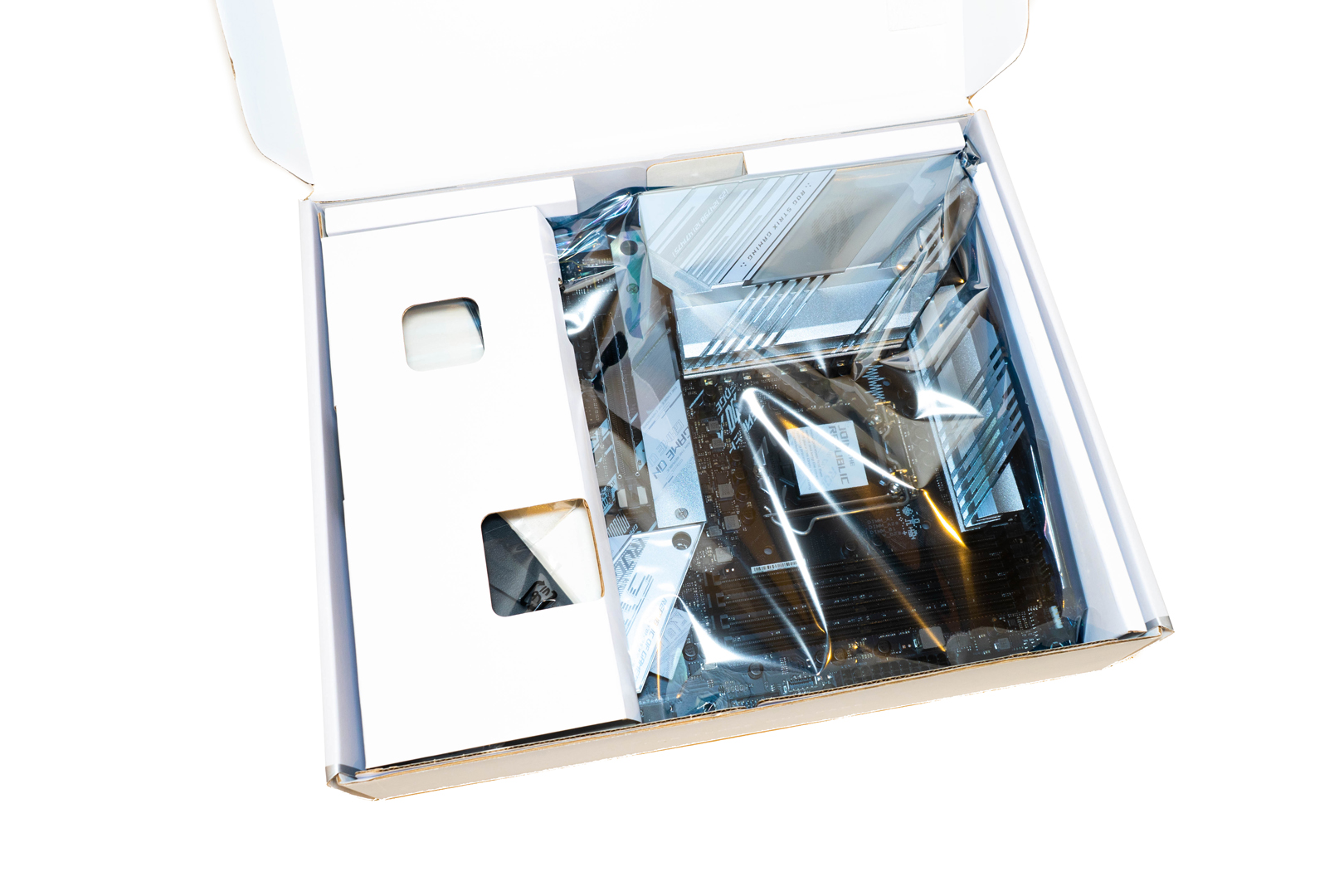
The originally designed WIFI antenna

Product Analysis
The front and back look
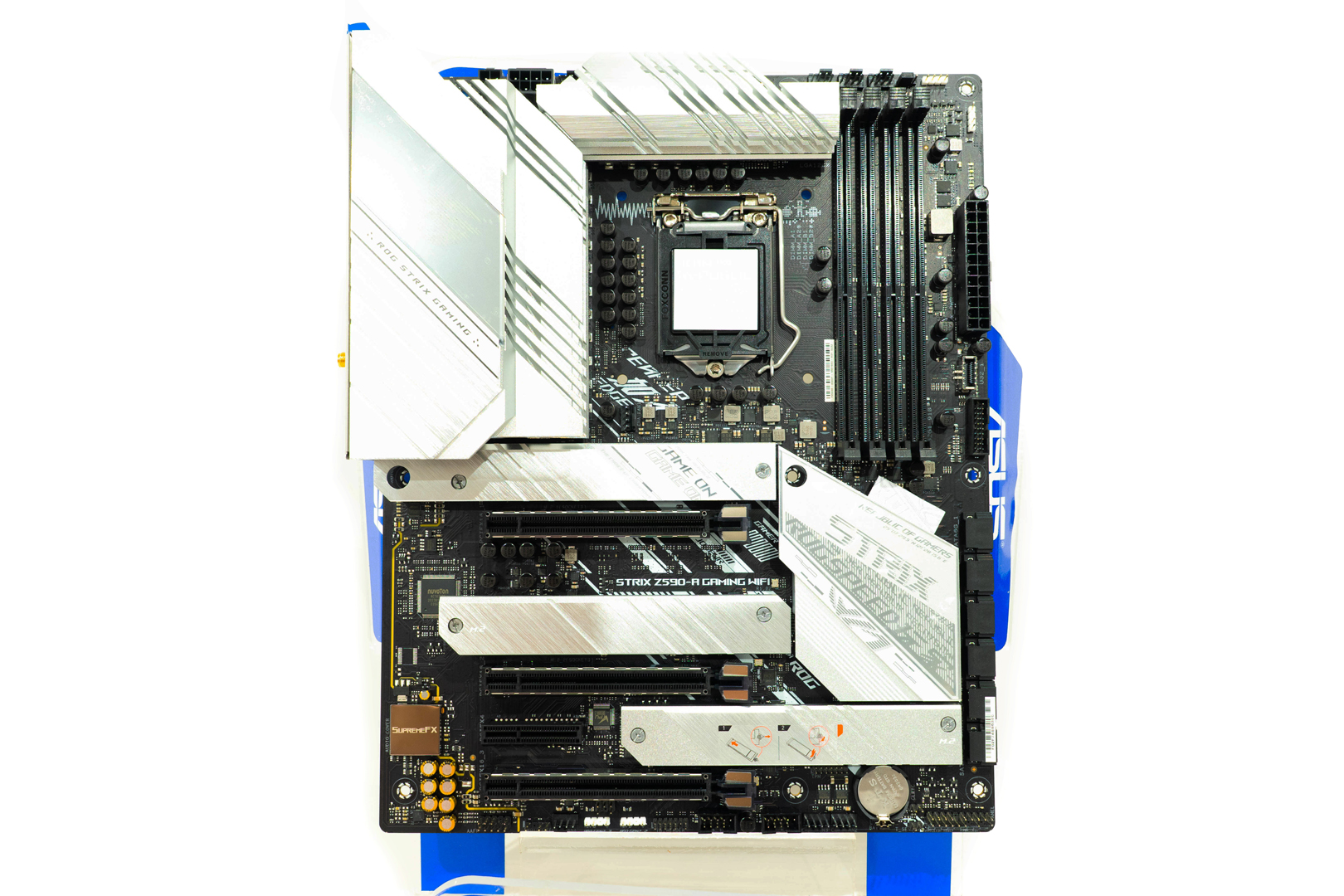
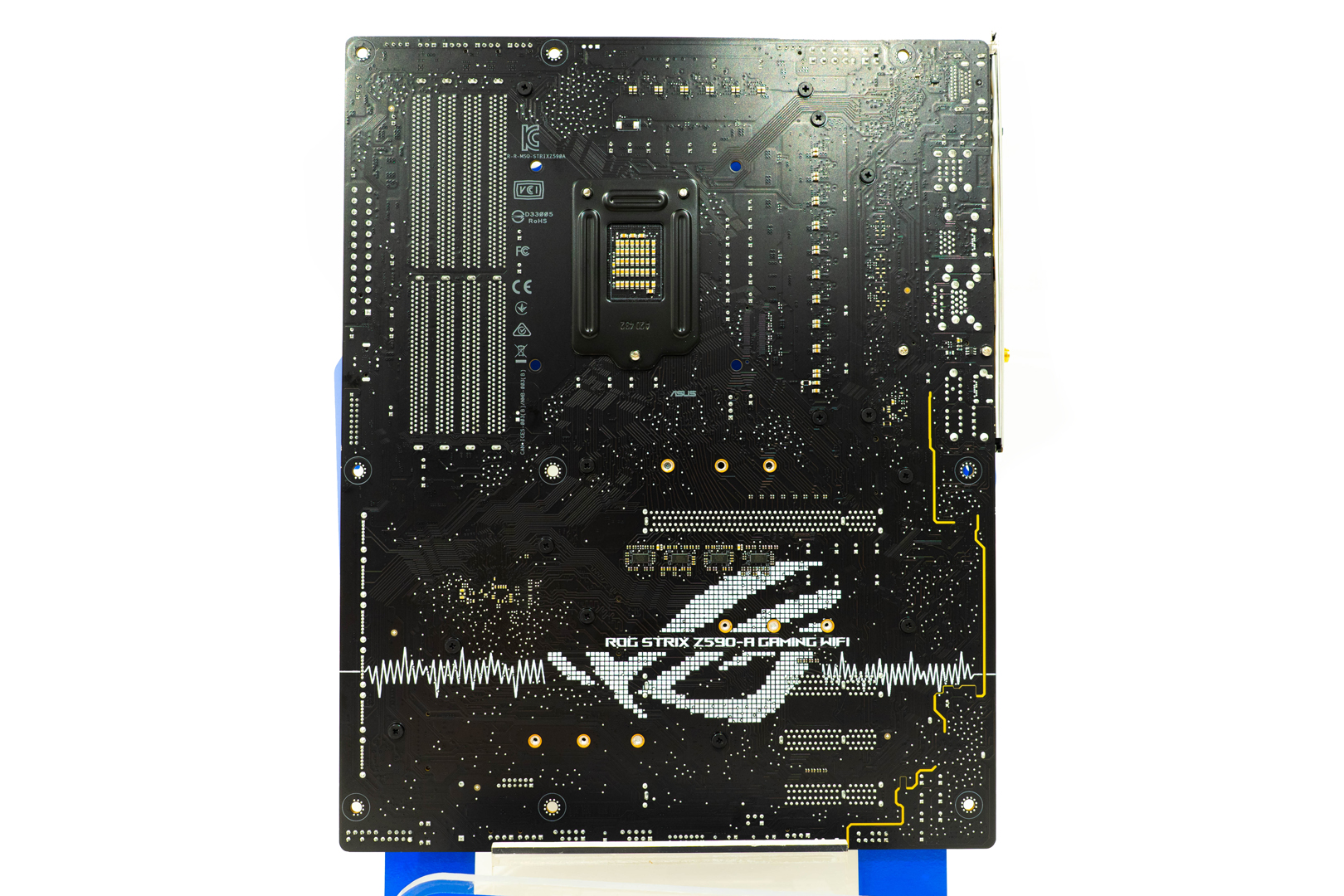
The top I/O includes 1×8-pin(with ProCool shields) + 1×4-pin CPU power socket, 4 x fan headers, an RGB header and a CPU OV header
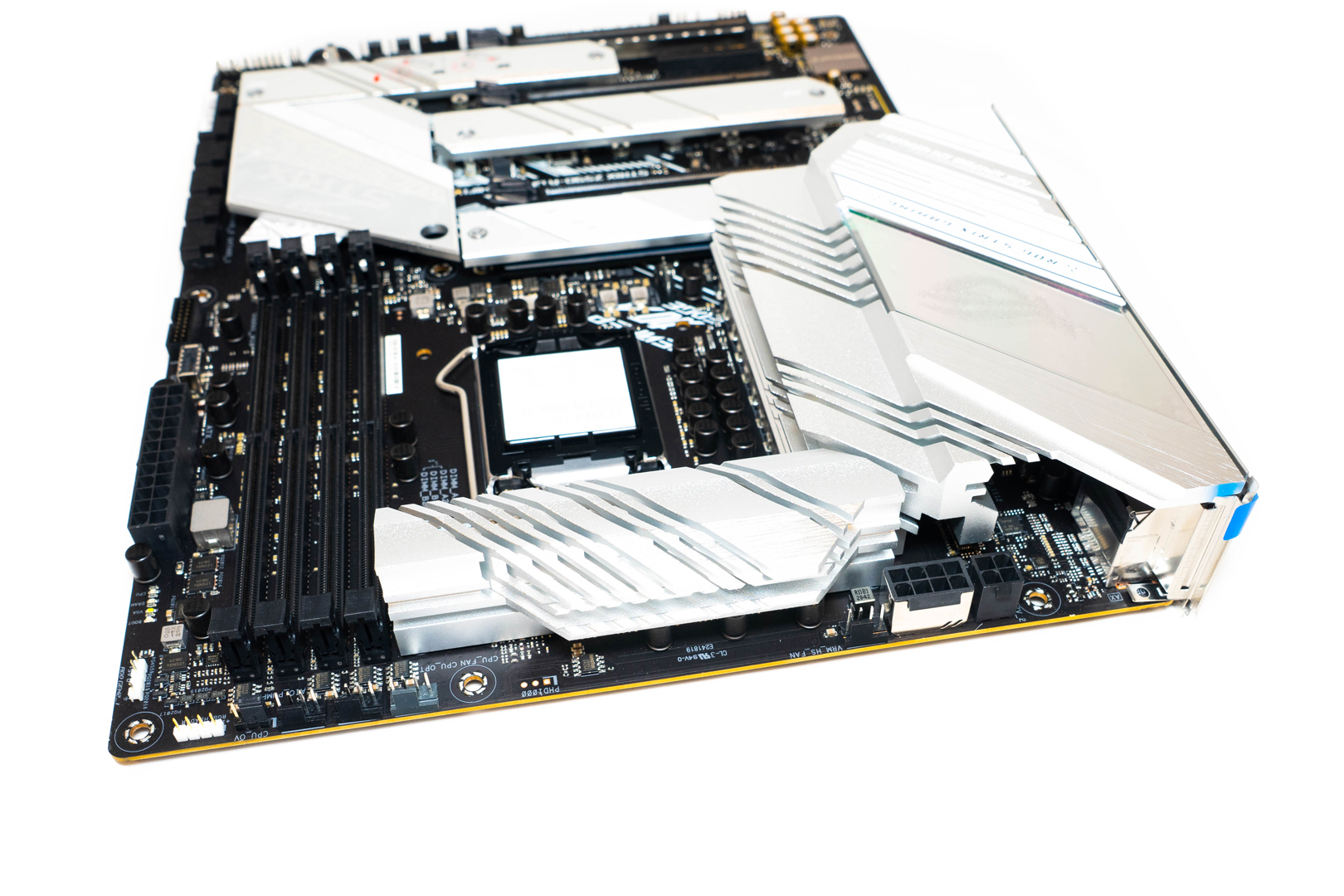
The side I/O – In this area of the motherboard, we can find 6 x SATA3 ports, a USB 3.2 Gen 1 header, a USB 3.2 Gen 1 type-c socket, 24pin power socket and an ARGB header
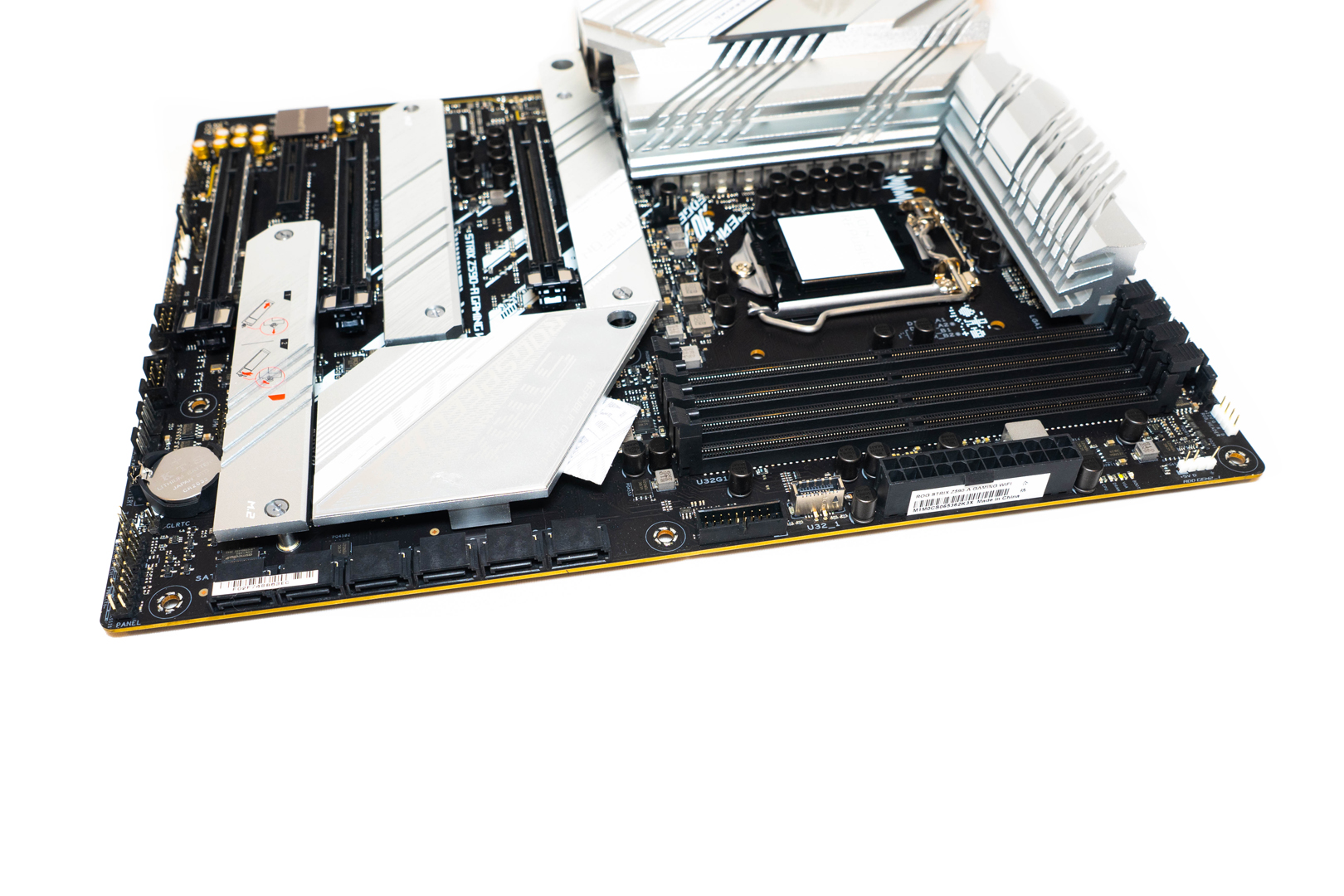
The rear I/O :
1 x USB 3.2 Gen 2×2 port(s) (1 x USB Type-C®)
4 x USB 3.2 Gen 2 port(s) (4 x Type-A)
5 x USB 2.0 port(s) (4 x Type-A, 1 x Audio USB Type-C®)
1 x HDMI™ port
1 x DisplayPort
1 x ASUS Wi-Fi Module
1 x Intel® I225-V 2.5Gb Ethernet
5 x Audio jacks
1 x BIOS FlashBack™ button

The bottom I/O, includes an HD audio header, a S/PDIF out header, 3 x fan headers, 2 x ARGB headers, a Thunderbolt 4 header, 2 x USB 2.0 headers and a Thermal Sensor header
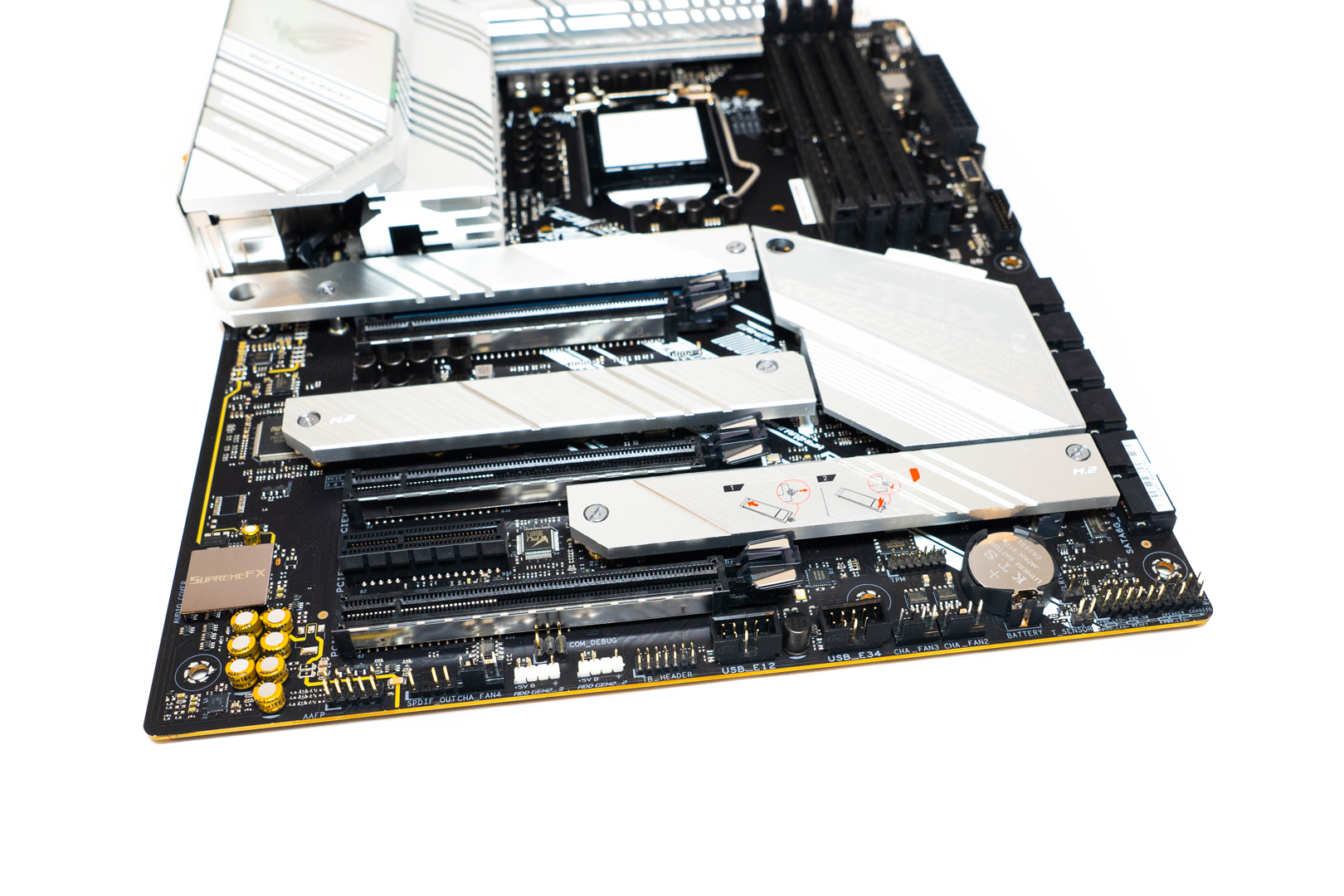
This motherboard includes 4 x M.2 SSD slots
The M.2_1 port only supports PCIe Gen4 x4 mode by Intel’s 11th gen CPU, this slot will be disabled for other CPUs
The M.2_2 and M.2_3 port supports both PCIe Gen3 x4 and SATA(shared with SATA3_2&6 ports)
It is worth noting that only the M.2_1 slot offers the same thermally conductive metal base plate as the M13H
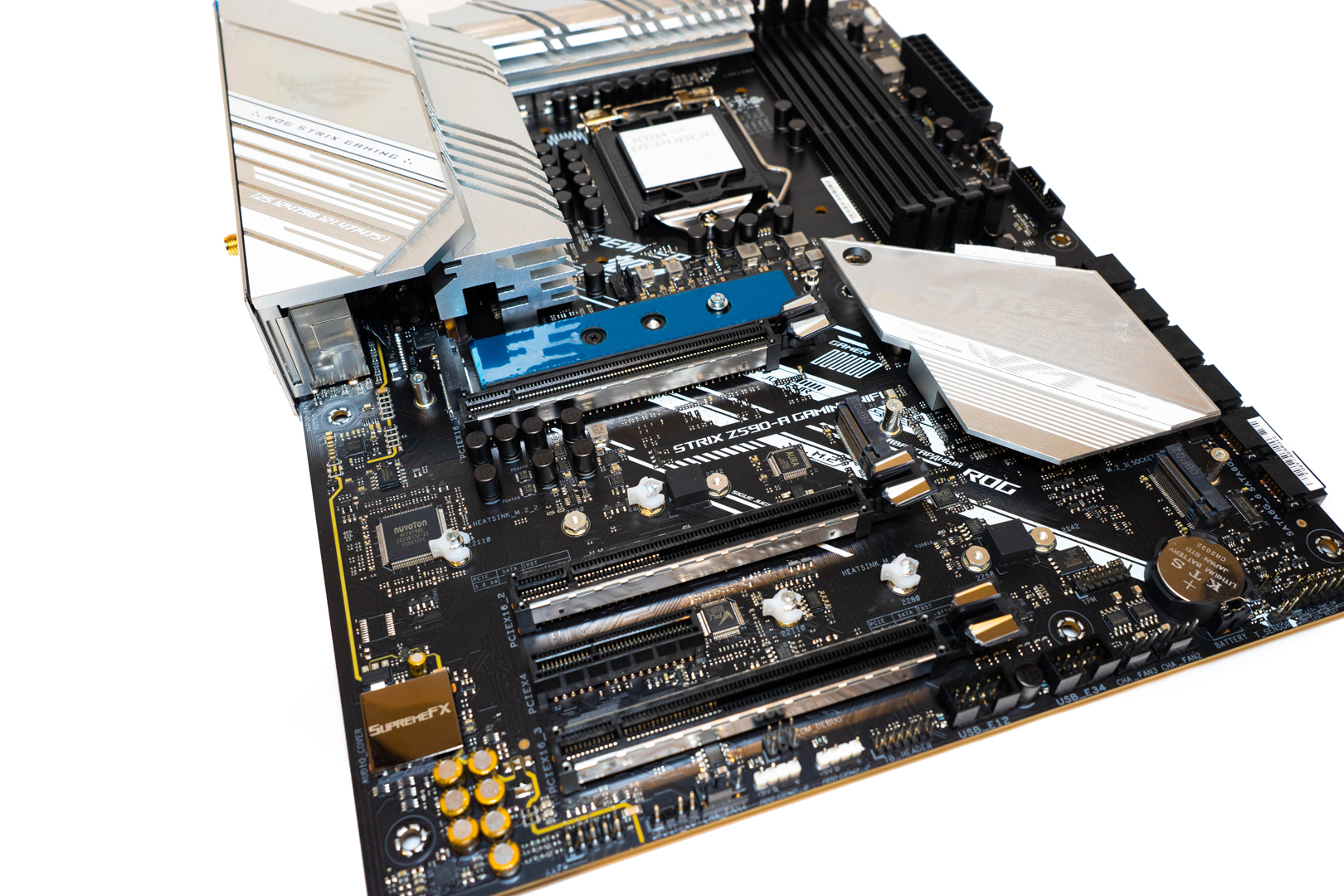
The M.2 SSD full metal heat sinks
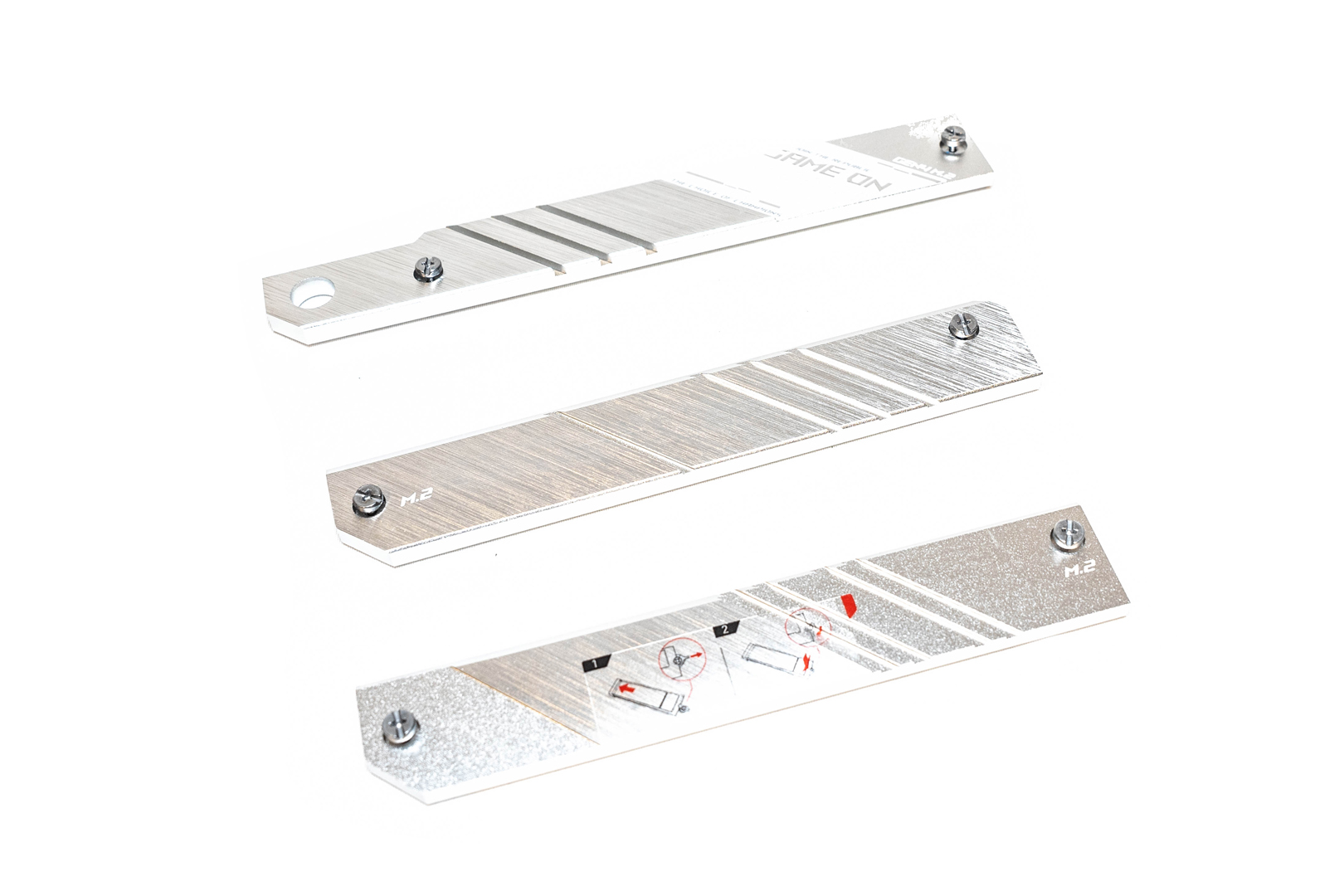
The rear IO shield VRM heatsink with ROG RGB logo

The main processor power controller chip is the Intersil ISL69269, it adopts a 14+2+1-phase, three-way CPU core power supply. The distribution on the motherboard is 7 parallel 14-phase CPU core + 2-phase integrated graphics + 1-phase Vccsa, the “Dr.Mos” chip is 95410RRB from Texas Instruments, single-phase 90A maximum current and total of 1440A

The ASUS SupremeFX supported sound card is ALC4080 from Realtek with Savitech SV3H712 AMP, it also uses the famous golden capacitors from Nichicon
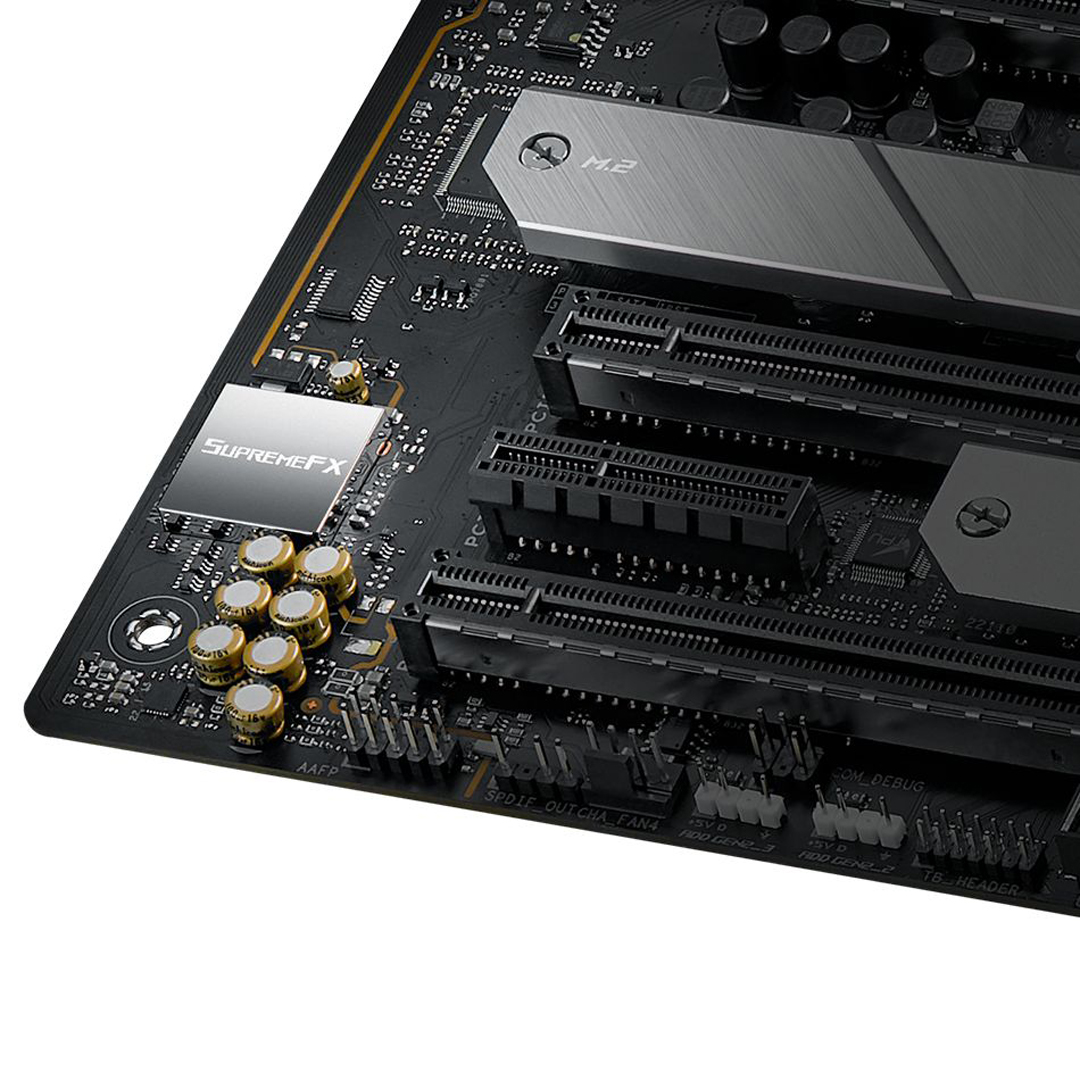
The LGA 1200 slot of Intel’s 10/11th gen Core desktop processor
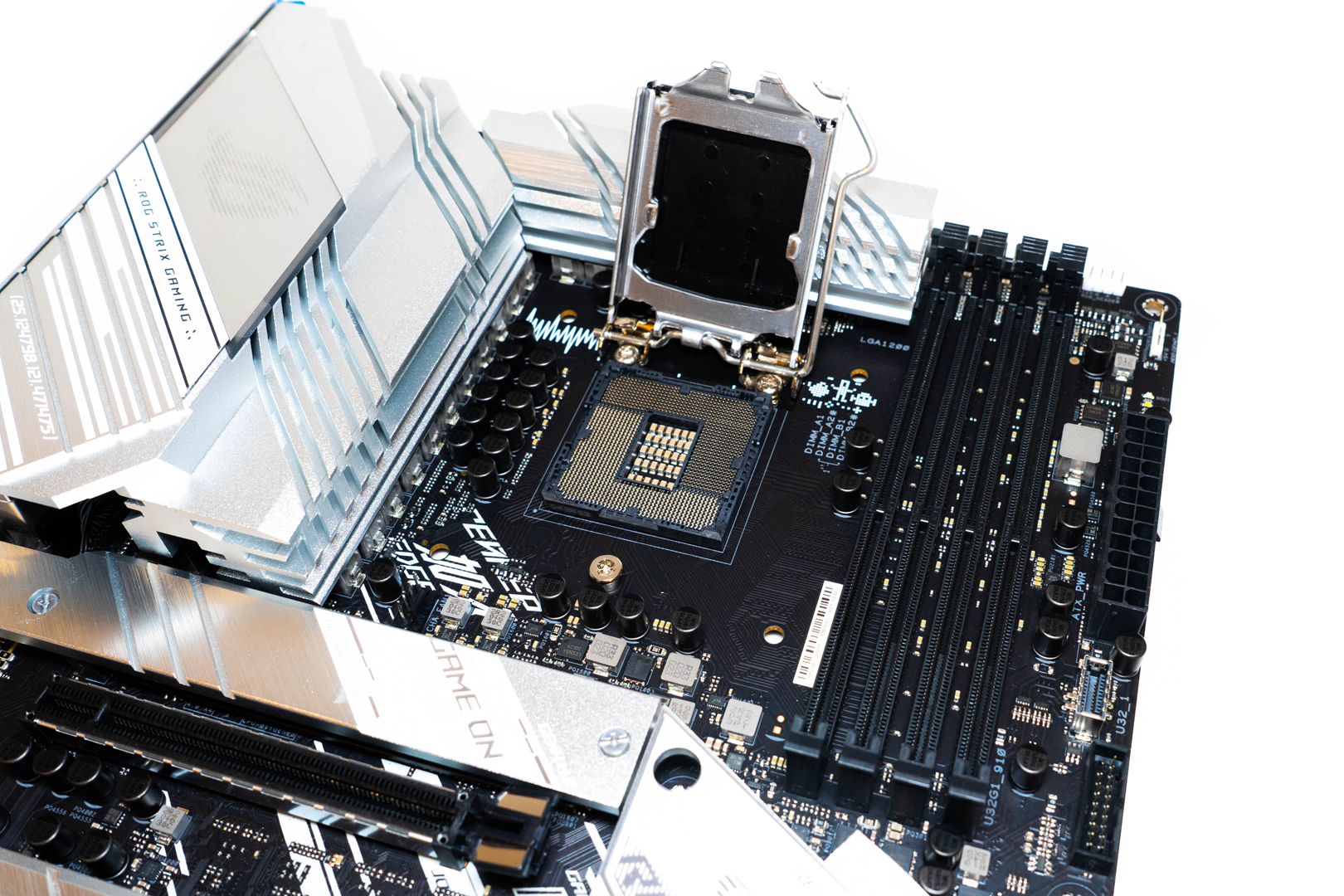
Overall
Overall, compared to the previous generation Z490 motherboard, the Z590 has significant upgrades in many areas such as power supply, memory compatibility and OC cap to unleash the maximum potential of the 11th and 10th generation Cores. The enhanced power supply also further strengthens the overall thermal environment of the motherboard with full coverage metal armour, including multiple sets of oversized heatsink fins, aluminium I/O armour with built-in heat pipes and high-quality thermal paste for significantly lower temperatures and better performance. This is definitely the perfect motherboard series for gamers and enthusiasts at the moment.
Spec-wise, the speed bonus that Thunderbolt 4 brings as a standard for the high-end Maximus series is a qualitative leap forward, knowing that the Thunderbolt interface used to be a standard for Apple, standing for high speed and stability. Now PC users can also enjoy the convenience and efficiency of this technology. And with PCIe Gen4 support comes higher speed M.2 SSD drives and increased graphics card bandwidth. For gamers, Asus has not only upgraded the LAN card to 2.5Gb, but WIFI 6/6E is also integrated as standard on the Z390-A and F models which were not previously equipped with WIFI, with WIFI 6E on the high-end model and WIFI 6 on the mid-range model. the sound card has been upgraded to SupremeFX ALC 4080/4082, with Savitech SV3H712 AMP or ESS ES9018Q2C DAC, taking gaming sound to a higher level and providing gamers with an immersive gaming experience.
The exterior lighting is unified with the Glitch logo design on these motherboards, reflecting the strong Cyberpunk style, with Aura sync for light linkage with other devices.
Technically, thanks to the new AI2.0 boost, it is very simple for users to overclock, temperature control, network and noise optimisation, saving a lot of time by eliminating the hassle of slow tweaking.
In terms of price, the entire Z590 series is on the higher side than the previous generation. After all, a large number of new features and the time saved by the simplified operation still needs to be paid for by the users themselves, after all, you get what you pay for.
EPIC REWARD: DESIGN AWARD, EPIC RECOMMENDED AWARD



